As software developers, engineer, architects, DevOps, Tester or any other fields in IT (Information Technology), we constantly need to learn new concepts, programming languages and technologies to stay up to date. there are numerous ways and methods to learn different and new technologies, such as YouTube, blogs, books, etc. One of my preferred methods for learning is by reading books. But, the problem is, there are so many books that it can be difficult to find the ones that are worth your time. That is why this article try to covered some of the best and important books, in the field of IT, I have found over the years that are worth reading. I tried to divide them into different categories like Software Architecture books, Coding practices books, Testing books, and DevOps books.
Software Architecture books
Patterns of Enterprise Application Architecture
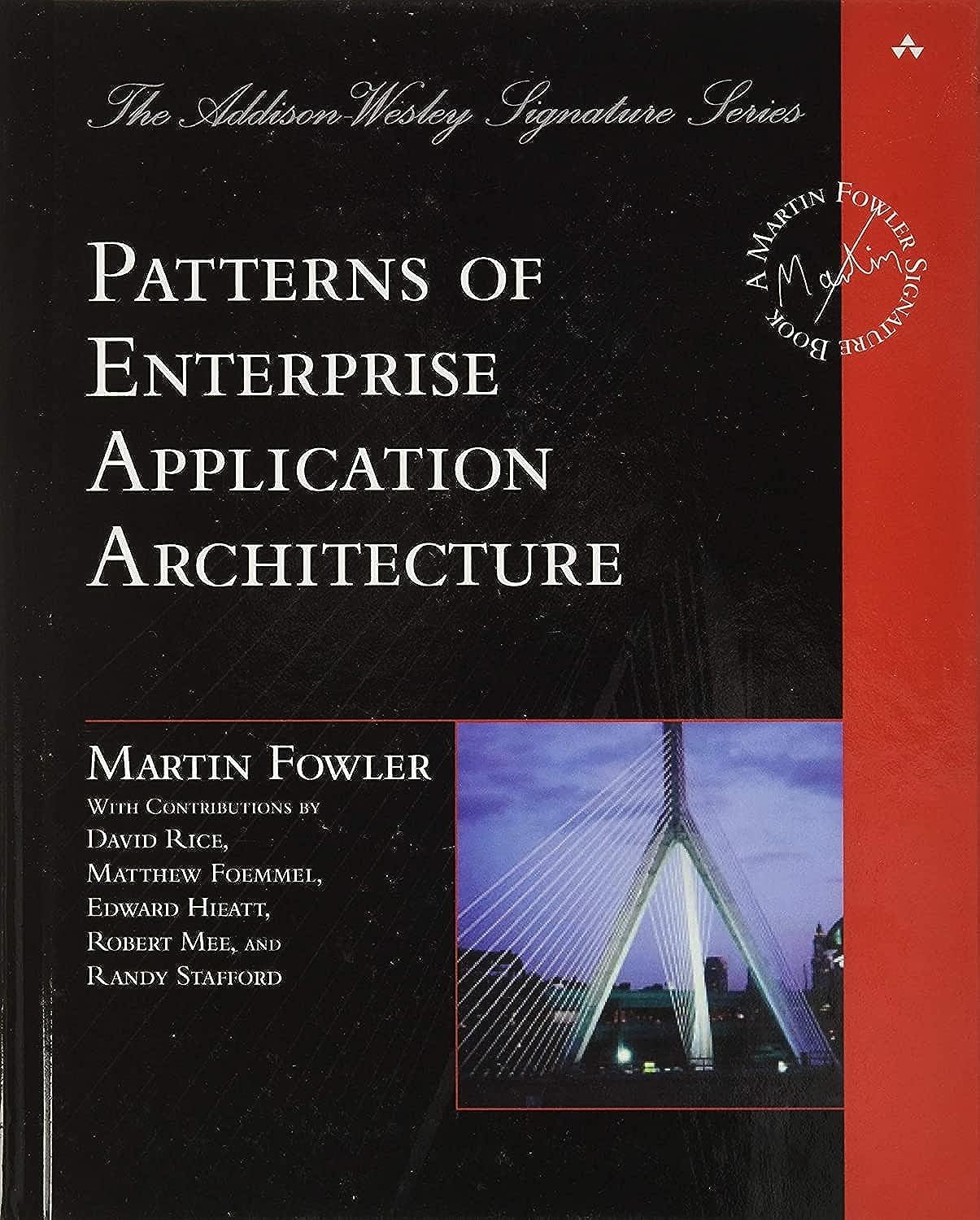 Developers of enterprise applications (e.g reservation systems, supply chain programs, financial systems, etc.) face a unique set of challenges, different than those faced by their desktop system and embedded system peers. For this reason, enterprise developers must uncover their own solutions. In this new book, noted software engineering expert Martin Fowler turns his attention to enterprise application development. He helps professionals understand the complex -- yet critical -- aspects of architecture. While architecture is important to all application development, it is particularly critical to the success of an enterprise project, where issues such as performance and concurrent multi-user access are paramount. The book presents patterns (proven solutions to recurring problems) in enterprise architecture, and the context provided by the author enables the reader to make the proper choices when faced with a difficult design decision.
Developers of enterprise applications (e.g reservation systems, supply chain programs, financial systems, etc.) face a unique set of challenges, different than those faced by their desktop system and embedded system peers. For this reason, enterprise developers must uncover their own solutions. In this new book, noted software engineering expert Martin Fowler turns his attention to enterprise application development. He helps professionals understand the complex -- yet critical -- aspects of architecture. While architecture is important to all application development, it is particularly critical to the success of an enterprise project, where issues such as performance and concurrent multi-user access are paramount. The book presents patterns (proven solutions to recurring problems) in enterprise architecture, and the context provided by the author enables the reader to make the proper choices when faced with a difficult design decision.Martin Fowler
2002
1th
English
560 pages
Designing Data-Intensive Applications
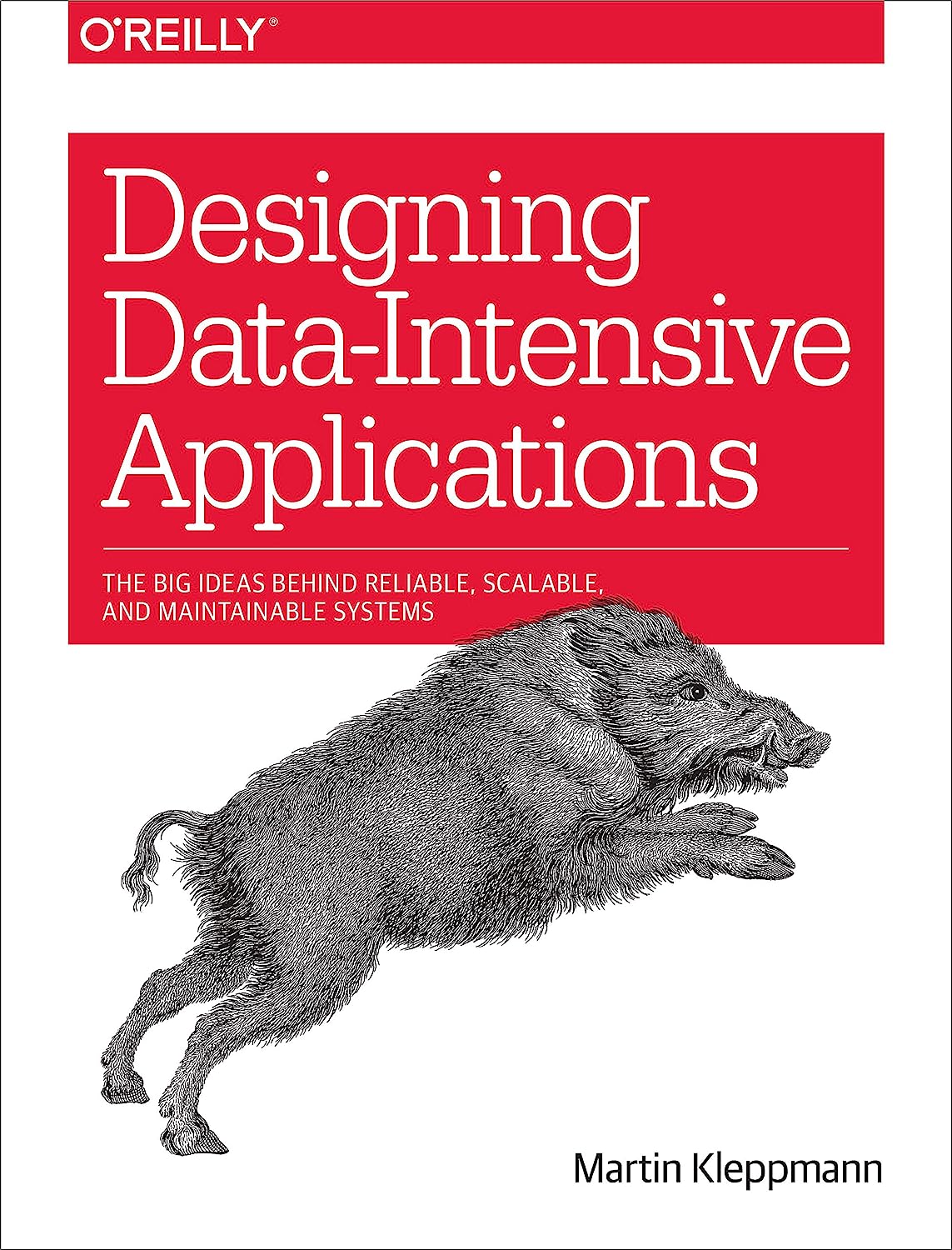 Data is at the center of many challenges in system design today. Difficult issues need to be figured out, such as scalability, consistency, reliability, efficiency, and maintainability. In addition, we have an overwhelming variety of tools, including relational databases, NoSQL datastores, stream or batch processors, and message brokers. What are the right choices for your application? How do you make sense of all these buzzwords? In this practical and comprehensive guide, author Martin Kleppmann helps you navigate this diverse landscape by examining the pros and cons of various technologies for processing and storing data. Software keeps changing, but the fundamental principles remain the same. With this book, software engineers and architects will learn how to apply those ideas in practice, and how to make full use of data in modern applications.
Data is at the center of many challenges in system design today. Difficult issues need to be figured out, such as scalability, consistency, reliability, efficiency, and maintainability. In addition, we have an overwhelming variety of tools, including relational databases, NoSQL datastores, stream or batch processors, and message brokers. What are the right choices for your application? How do you make sense of all these buzzwords? In this practical and comprehensive guide, author Martin Kleppmann helps you navigate this diverse landscape by examining the pros and cons of various technologies for processing and storing data. Software keeps changing, but the fundamental principles remain the same. With this book, software engineers and architects will learn how to apply those ideas in practice, and how to make full use of data in modern applications.M. Kleppmann
2017
1th
English
611 pages
System Design Interview – An insider’s guide
 System design interviews are the most difficult to tackle of all technical interview questions. This book is Volume 1 of the System Design Interview - An insider’s guide series that provides a reliable strategy and knowledge base for approaching a broad range of system design questions. This book provides a step-by-step framework for how to tackle a system design question. It includes many real-world examples to illustrate the systematic approach, with detailed steps that you can follow.
System design interviews are the most difficult to tackle of all technical interview questions. This book is Volume 1 of the System Design Interview - An insider’s guide series that provides a reliable strategy and knowledge base for approaching a broad range of system design questions. This book provides a step-by-step framework for how to tackle a system design question. It includes many real-world examples to illustrate the systematic approach, with detailed steps that you can follow.Alex Xu
2020
1th
English
320 pages
System Design Interview – An Insider’s Guide: Volume 2
 This book can be seen as a sequel to the book: System Design Interview - An Insider’s Guide. It covers a different set of system design interview questions and solutions. Although reading Volume 1 is helpful, it is not required. This book should be accessible to readers who have a basic understanding of distributed systems. This volume provides a reliable strategy and knowledge base for approaching a broad range of system design questions that you may encounter. It will help you feel confident during this important interview. This book provides a step-by-step framework for how to tackle a system design question. It also includes many real-world examples to illustrate a systematic approach, with detailed and well-explained steps you can follow.
This book can be seen as a sequel to the book: System Design Interview - An Insider’s Guide. It covers a different set of system design interview questions and solutions. Although reading Volume 1 is helpful, it is not required. This book should be accessible to readers who have a basic understanding of distributed systems. This volume provides a reliable strategy and knowledge base for approaching a broad range of system design questions that you may encounter. It will help you feel confident during this important interview. This book provides a step-by-step framework for how to tackle a system design question. It also includes many real-world examples to illustrate a systematic approach, with detailed and well-explained steps you can follow.Alex Xu
Sahn Lam
2020
1th
English
434 pages
Software Architecture in Practice
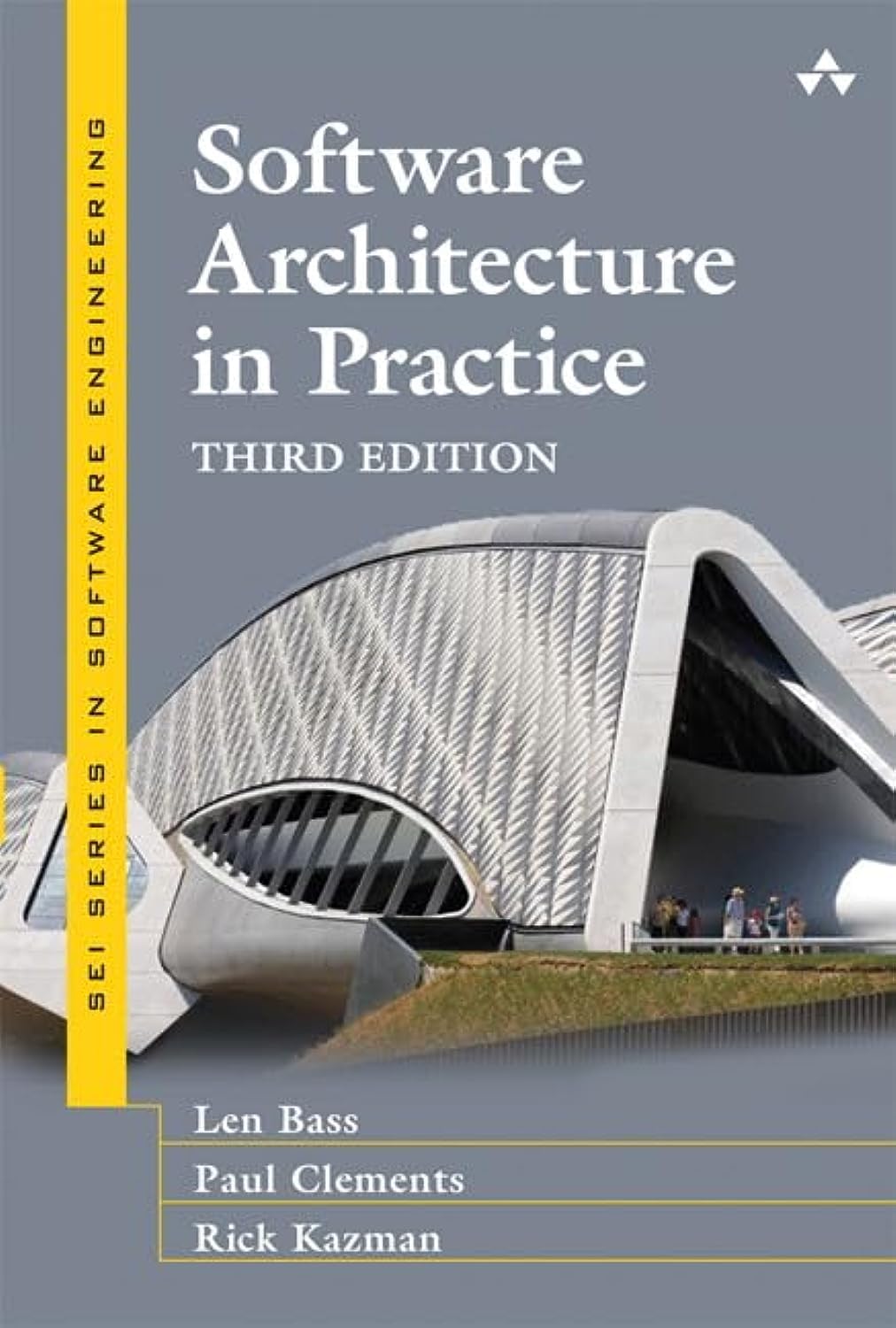 The award-winning and highly influential Software Architecture in Practice, Third Edition, has been substantially revised to reflect the latest developments in the field. In a real-world setting, the book once again introduces the concepts and best practices of software architecture―how a software system is structured and how that system’s elements are meant to interact. Distinct from the details of implementation, algorithm, and data representation, an architecture holds the key to achieving system quality, is a reusable asset that can be applied to subsequent systems, and is crucial to a software organization’s business strategy. The authors have structured this edition around the concept of architecture influence cycles. Each cycle shows how architecture influences, and is influenced by, a particular context in which architecture plays a critical role. Contexts include technical environment, the life cycle of a project, an organization’s business profile, and the architect’s professional practices. The authors also have greatly expanded their treatment of quality attributes, which remain central to their architecture philosophy―with an entire chapter devoted to each attribute―and broadened their treatment of architectural patterns. If you design, develop, or manage large software systems (or plan to do so), you will find this book to be a valuable resource for getting up to speed on the state of the art.
The award-winning and highly influential Software Architecture in Practice, Third Edition, has been substantially revised to reflect the latest developments in the field. In a real-world setting, the book once again introduces the concepts and best practices of software architecture―how a software system is structured and how that system’s elements are meant to interact. Distinct from the details of implementation, algorithm, and data representation, an architecture holds the key to achieving system quality, is a reusable asset that can be applied to subsequent systems, and is crucial to a software organization’s business strategy. The authors have structured this edition around the concept of architecture influence cycles. Each cycle shows how architecture influences, and is influenced by, a particular context in which architecture plays a critical role. Contexts include technical environment, the life cycle of a project, an organization’s business profile, and the architect’s professional practices. The authors also have greatly expanded their treatment of quality attributes, which remain central to their architecture philosophy―with an entire chapter devoted to each attribute―and broadened their treatment of architectural patterns. If you design, develop, or manage large software systems (or plan to do so), you will find this book to be a valuable resource for getting up to speed on the state of the art.Len Bass
Paul Clements
Rick Kazman
2012
3rd
English
624 pages
Clean-Architecture
 By applying universal rules of software architecture, you can dramatically improve developer productivity throughout the life of any software system. Now, building upon the success of his best-selling books Clean Code and The Clean Coder, legendary software craftsman Robert C. Martin (“Uncle Bob”) reveals those rules and helps you apply them. Martin’s Clean Architecture doesn’t merely present options. Drawing on over a half-century of experience in software environments of every imaginable type, Martin tells you what choices to make and why they are critical to your success. As you’ve come to expect from Uncle Bob, this book is packed with direct, no-nonsense solutions for the real challenges you’ll face–the ones that will make or break your projects.
By applying universal rules of software architecture, you can dramatically improve developer productivity throughout the life of any software system. Now, building upon the success of his best-selling books Clean Code and The Clean Coder, legendary software craftsman Robert C. Martin (“Uncle Bob”) reveals those rules and helps you apply them. Martin’s Clean Architecture doesn’t merely present options. Drawing on over a half-century of experience in software environments of every imaginable type, Martin tells you what choices to make and why they are critical to your success. As you’ve come to expect from Uncle Bob, this book is packed with direct, no-nonsense solutions for the real challenges you’ll face–the ones that will make or break your projects.Robert C. Martin
2017
1st
English
432 pages
Domain-Driven Design: Tackling Complexity in the Heart of Software
 The software development community widely acknowledges that domain modeling is central to software design. Through domain models, software developers are able to express rich functionality and translate it into a software implementation that truly serves the needs of its users. But despite its obvious importance, there are few practical resources that explain how to incorporate effective domain modeling into the software development process. Domain-Driven Design fills that need. This is not a book about specific technologies. It offers readers a systematic approach to domain-driven design, presenting an extensive set of design best practices, experience-based techniques, and fundamental principles that facilitate the development of software projects facing complex domains. Intertwining design and development practice, this book incorporates numerous examples based on actual projects to illustrate the application of domain-driven design to real-world software development. Readers learn how to use a domain model to make a complex development effort more focused and dynamic. A core of best practices and standard patterns provides a common language for the development team. A shift in emphasis–refactoring not just the code but the model underlying the code–in combination with the frequent iterations of Agile development leads to deeper insight into domains and enhanced communication between domain expert and programmer. Domain-Driven Design then builds on this foundation, and addresses modeling and design for complex systems and larger organizations.
The software development community widely acknowledges that domain modeling is central to software design. Through domain models, software developers are able to express rich functionality and translate it into a software implementation that truly serves the needs of its users. But despite its obvious importance, there are few practical resources that explain how to incorporate effective domain modeling into the software development process. Domain-Driven Design fills that need. This is not a book about specific technologies. It offers readers a systematic approach to domain-driven design, presenting an extensive set of design best practices, experience-based techniques, and fundamental principles that facilitate the development of software projects facing complex domains. Intertwining design and development practice, this book incorporates numerous examples based on actual projects to illustrate the application of domain-driven design to real-world software development. Readers learn how to use a domain model to make a complex development effort more focused and dynamic. A core of best practices and standard patterns provides a common language for the development team. A shift in emphasis–refactoring not just the code but the model underlying the code–in combination with the frequent iterations of Agile development leads to deeper insight into domains and enhanced communication between domain expert and programmer. Domain-Driven Design then builds on this foundation, and addresses modeling and design for complex systems and larger organizations.Eric Evans
2003
1st
English
560 pages
Fundamentals of Software Architecture: An Engineering Approach
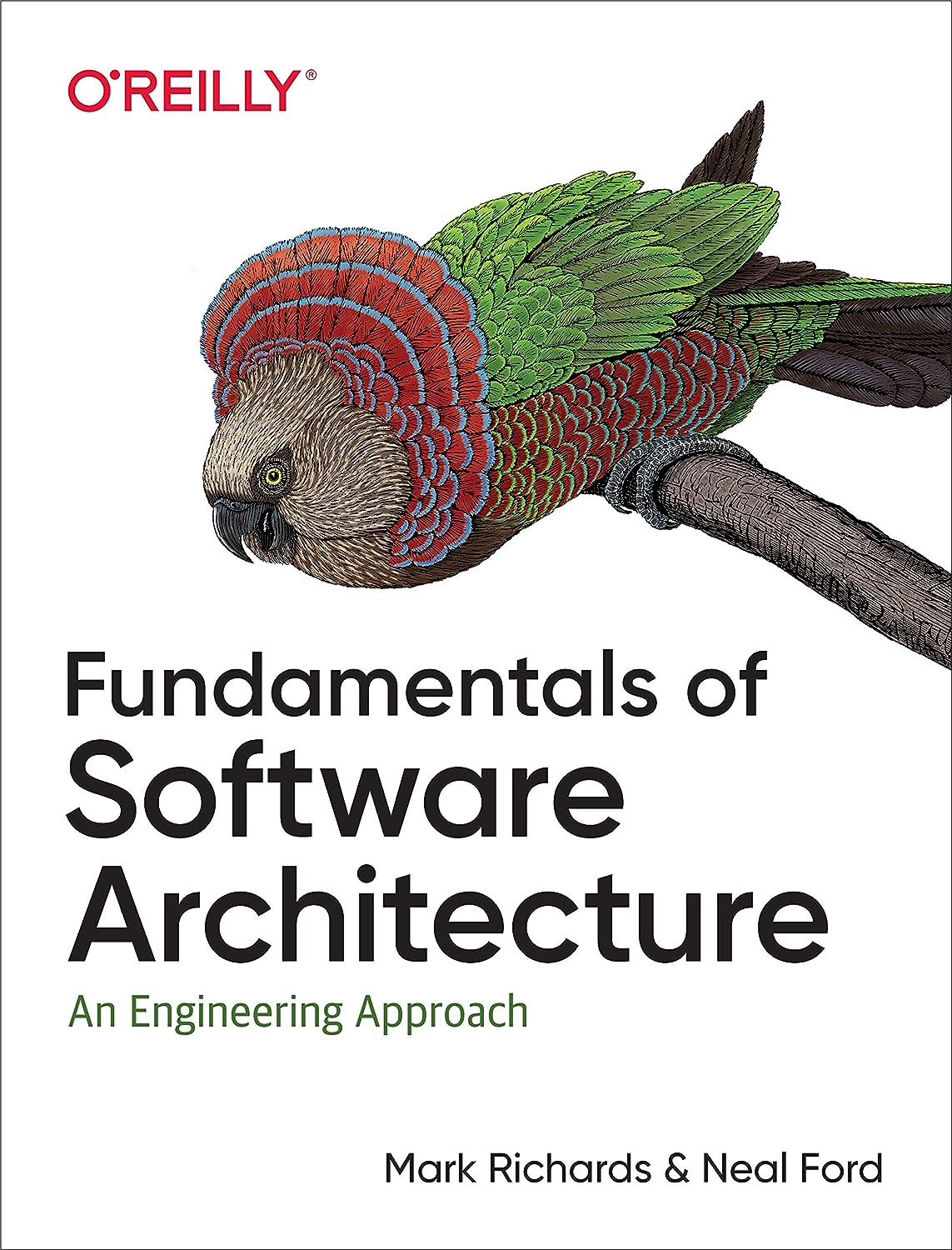 Salary surveys worldwide regularly place software architect in the top 10 best jobs, yet no real guide exists to help developers become architects. Until now. This book provides the first comprehensive overview of software architecture's many aspects. Aspiring and existing architects alike will examine architectural characteristics, architectural patterns, component determination, diagramming and presenting architecture, evolutionary architecture, and many other topics. Mark Richards and Neal Ford-hands-on practitioners who have taught software architecture classes professionally for years-focus on architecture principles that apply across all technology stacks. You'll explore software architecture in a modern light, taking into account all the innovations of the past decade.
Salary surveys worldwide regularly place software architect in the top 10 best jobs, yet no real guide exists to help developers become architects. Until now. This book provides the first comprehensive overview of software architecture's many aspects. Aspiring and existing architects alike will examine architectural characteristics, architectural patterns, component determination, diagramming and presenting architecture, evolutionary architecture, and many other topics. Mark Richards and Neal Ford-hands-on practitioners who have taught software architecture classes professionally for years-focus on architecture principles that apply across all technology stacks. You'll explore software architecture in a modern light, taking into account all the innovations of the past decade.Mark Richards
Neal Ford
2020
1st
English
400 pages
Modern Software Engineering
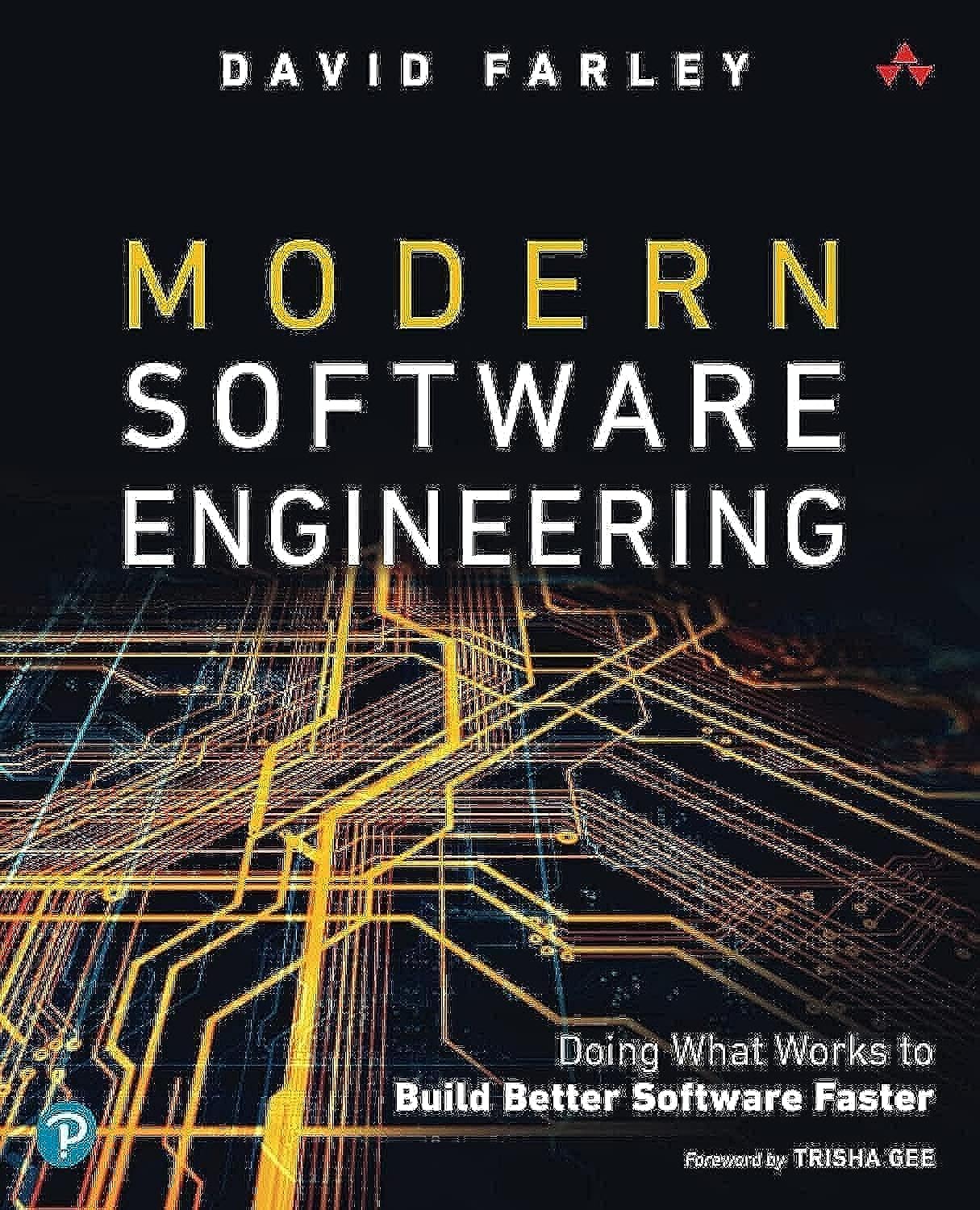 In Modern Software Engineering, continuous delivery pioneer David Farley helps software professionals think about their work more effectively, manage it more successfully, and genuinely improve the quality of their applications, their lives, and the lives of their colleagues. Writing for programmers, managers, and technical leads at all levels of experience, Farley illuminates durable principles at the heart of effective software development. He distills the discipline into two core exercises: learning and exploration and managing complexity. For each, he defines principles that can help you improve everything from your mindset to the quality of your code, and describes approaches proven to promote success. Farley's ideas and techniques cohere into a unified, scientific, and foundational approach to solving practical software development problems within realistic economic constraints. This general, durable, and pervasive approach to software engineering can help you solve problems you haven't encountered yet, using today's technologies and tomorrow's. It offers you deeper insight into what you do every day, helping you create better software, faster, with more pleasure and personal fulfillment.
In Modern Software Engineering, continuous delivery pioneer David Farley helps software professionals think about their work more effectively, manage it more successfully, and genuinely improve the quality of their applications, their lives, and the lives of their colleagues. Writing for programmers, managers, and technical leads at all levels of experience, Farley illuminates durable principles at the heart of effective software development. He distills the discipline into two core exercises: learning and exploration and managing complexity. For each, he defines principles that can help you improve everything from your mindset to the quality of your code, and describes approaches proven to promote success. Farley's ideas and techniques cohere into a unified, scientific, and foundational approach to solving practical software development problems within realistic economic constraints. This general, durable, and pervasive approach to software engineering can help you solve problems you haven't encountered yet, using today's technologies and tomorrow's. It offers you deeper insight into what you do every day, helping you create better software, faster, with more pleasure and personal fulfillment.David Farley
2021
1st
English
256 pages
Software Architecture: The Hard Parts
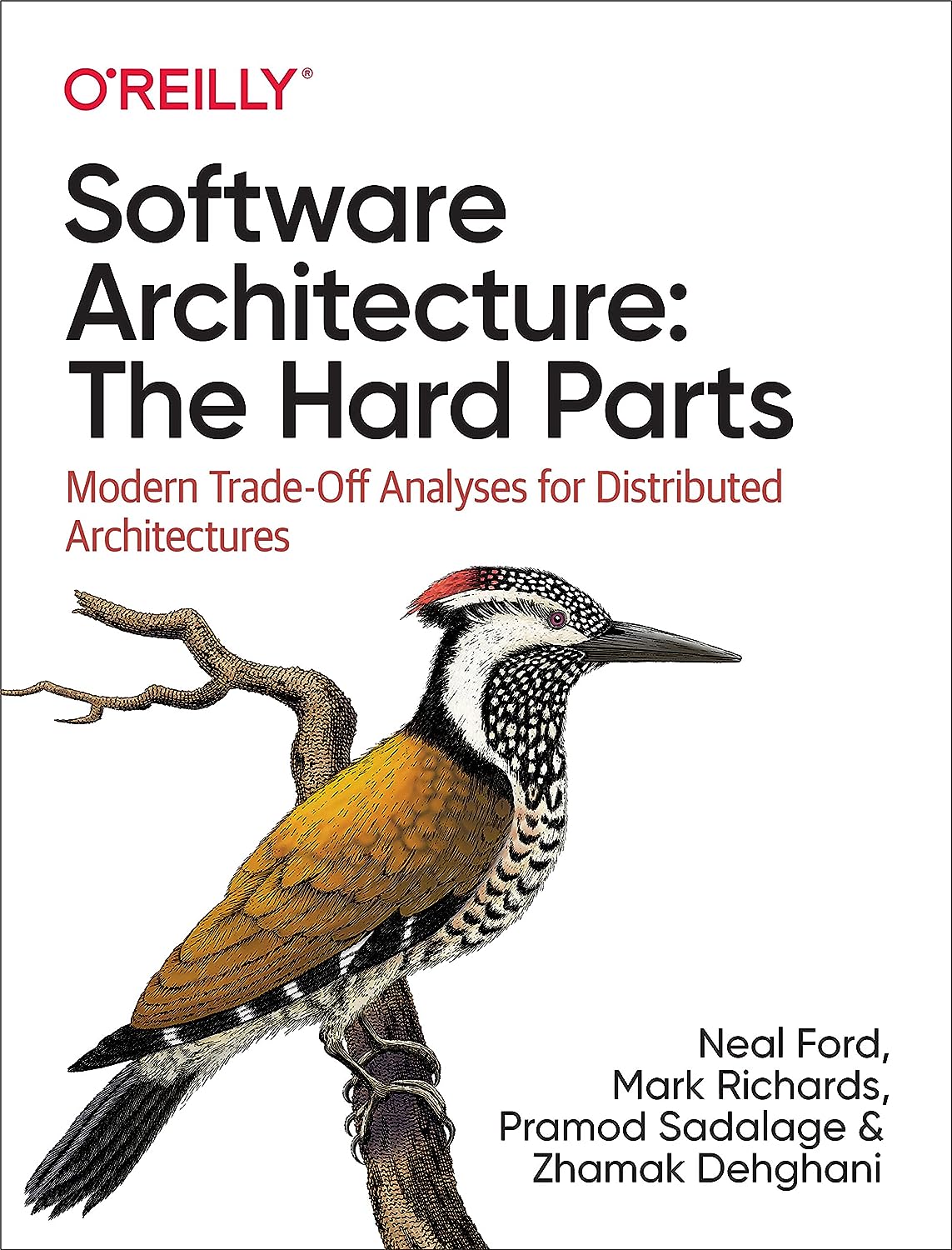 There are no easy decisions in software architecture. Instead, there are many hard parts--difficult problems or issues with no best practices--that force you to choose among various compromises. With this book, you'll learn how to think critically about the trade-offs involved with distributed architectures. Architecture veterans and practicing consultants Neal Ford, Mark Richards, Pramod Sadalage, and Zhamak Dehghani discuss strategies for choosing an appropriate architecture. By interweaving a story about a fictional group of technology professionals--the Sysops Squad--they examine everything from how to determine service granularity, manage workflows and orchestration, manage and decouple contracts, and manage distributed transactions to how to optimize operational characteristics, such as scalability, elasticity, and performance. By focusing on commonly asked questions, this book provides techniques to help you discover and weigh the trade-offs as you confront the issues you face as an architect.
There are no easy decisions in software architecture. Instead, there are many hard parts--difficult problems or issues with no best practices--that force you to choose among various compromises. With this book, you'll learn how to think critically about the trade-offs involved with distributed architectures. Architecture veterans and practicing consultants Neal Ford, Mark Richards, Pramod Sadalage, and Zhamak Dehghani discuss strategies for choosing an appropriate architecture. By interweaving a story about a fictional group of technology professionals--the Sysops Squad--they examine everything from how to determine service granularity, manage workflows and orchestration, manage and decouple contracts, and manage distributed transactions to how to optimize operational characteristics, such as scalability, elasticity, and performance. By focusing on commonly asked questions, this book provides techniques to help you discover and weigh the trade-offs as you confront the issues you face as an architect.Neal Ford
Mark Richards
Pramod Sadalage
Z. Dehghani
2021
1st
English
459 pages
Coding practices books
Clean Code
 Even bad code can function. But if code isn’t clean, it can bring a development organization to its knees. Every year, countless hours and significant resources are lost because of poorly written code. But it doesn’t have to be that way. Noted software expert Robert C. Martin, presents a revolutionary paradigm with Clean Code: A Handbook of Agile Software Craftsmanship. Martin, who has helped bring agile principles from a practitioner’s point of view to tens of thousands of programmers, has teamed up with his colleagues from Object Mentor to distill their best agile practice of cleaning code “on the fly” into a book that will instill within you the values of software craftsman, and make you a better programmer―but only if you work at it. What kind of work will you be doing? You’ll be reading code―lots of code. And you will be challenged to think about what’s right about that code, and what’s wrong with it. More importantly you will be challenged to reassess your professional values and your commitment to your craft. Clean Codeis divided into three parts. The first describes the principles, patterns, and practices of writing clean code. The second part consists of several case studies of increasing complexity. Each case study is an exercise in cleaning up code―of transforming a code base that has some problems into one that is sound and efficient. The third part is the payoff: a single chapter containing a list of heuristics and “smells” gathered while creating the case studies. The result is a knowledge base that describes the way we think when we write, read, and clean code.
Even bad code can function. But if code isn’t clean, it can bring a development organization to its knees. Every year, countless hours and significant resources are lost because of poorly written code. But it doesn’t have to be that way. Noted software expert Robert C. Martin, presents a revolutionary paradigm with Clean Code: A Handbook of Agile Software Craftsmanship. Martin, who has helped bring agile principles from a practitioner’s point of view to tens of thousands of programmers, has teamed up with his colleagues from Object Mentor to distill their best agile practice of cleaning code “on the fly” into a book that will instill within you the values of software craftsman, and make you a better programmer―but only if you work at it. What kind of work will you be doing? You’ll be reading code―lots of code. And you will be challenged to think about what’s right about that code, and what’s wrong with it. More importantly you will be challenged to reassess your professional values and your commitment to your craft. Clean Codeis divided into three parts. The first describes the principles, patterns, and practices of writing clean code. The second part consists of several case studies of increasing complexity. Each case study is an exercise in cleaning up code―of transforming a code base that has some problems into one that is sound and efficient. The third part is the payoff: a single chapter containing a list of heuristics and “smells” gathered while creating the case studies. The result is a knowledge base that describes the way we think when we write, read, and clean code.Robert C. Martin
2008
1st
English
464 pages
The Pragmatic Programmer: Your Journey To Mastery
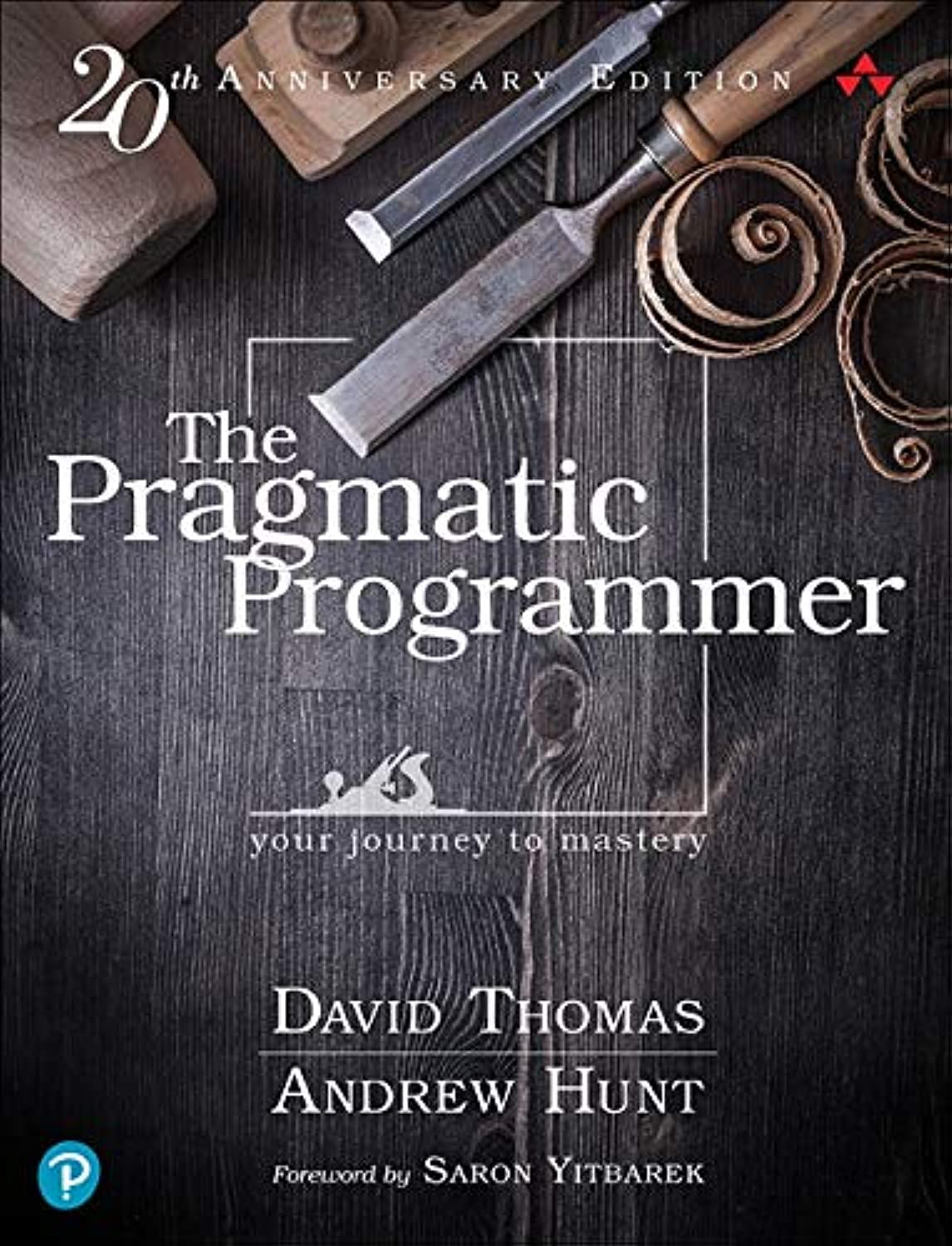 The Pragmatic Programmer is one of those rare tech books you’ll read, re-read, and read again over the years. Whether you’re new to the field or an experienced practitioner, you’ll come away with fresh insights each and every time. Dave Thomas and Andy Hunt wrote the first edition of this influential book in 1999 to help their clients create better software and rediscover the joy of coding. These lessons have helped a generation of programmers examine the very essence of software development, independent of any particular language, framework, or methodology, and the Pragmatic philosophy has spawned hundreds of books, screencasts, and audio books, as well as thousands of careers and success stories.
The Pragmatic Programmer is one of those rare tech books you’ll read, re-read, and read again over the years. Whether you’re new to the field or an experienced practitioner, you’ll come away with fresh insights each and every time. Dave Thomas and Andy Hunt wrote the first edition of this influential book in 1999 to help their clients create better software and rediscover the joy of coding. These lessons have helped a generation of programmers examine the very essence of software development, independent of any particular language, framework, or methodology, and the Pragmatic philosophy has spawned hundreds of books, screencasts, and audio books, as well as thousands of careers and success stories.David Thomas
Andrew Hunt
2019
2nd
English
352 pages
Code Complete
 Widely considered one of the best practical guides to programming, Steve McConnell’s original code complete has been helping developers write better software for more than a decade. Now this classic book has been fully updated and revised with leading-edge practices—and hundreds of new code samples—illustrating the art and science of software construction. Capturing the body of knowledge available from research, academia, and everyday commercial practice, McConnell synthesizes the most effective techniques and must-know principles into clear, pragmatic guidance. No matter what your experience level, development environment, or project size, this book will inform and stimulate your thinking—and help you build the highest quality code.
Widely considered one of the best practical guides to programming, Steve McConnell’s original code complete has been helping developers write better software for more than a decade. Now this classic book has been fully updated and revised with leading-edge practices—and hundreds of new code samples—illustrating the art and science of software construction. Capturing the body of knowledge available from research, academia, and everyday commercial practice, McConnell synthesizes the most effective techniques and must-know principles into clear, pragmatic guidance. No matter what your experience level, development environment, or project size, this book will inform and stimulate your thinking—and help you build the highest quality code.Steve McConnell
2004
2nd
English
960 pages
The Art of Computer Programming
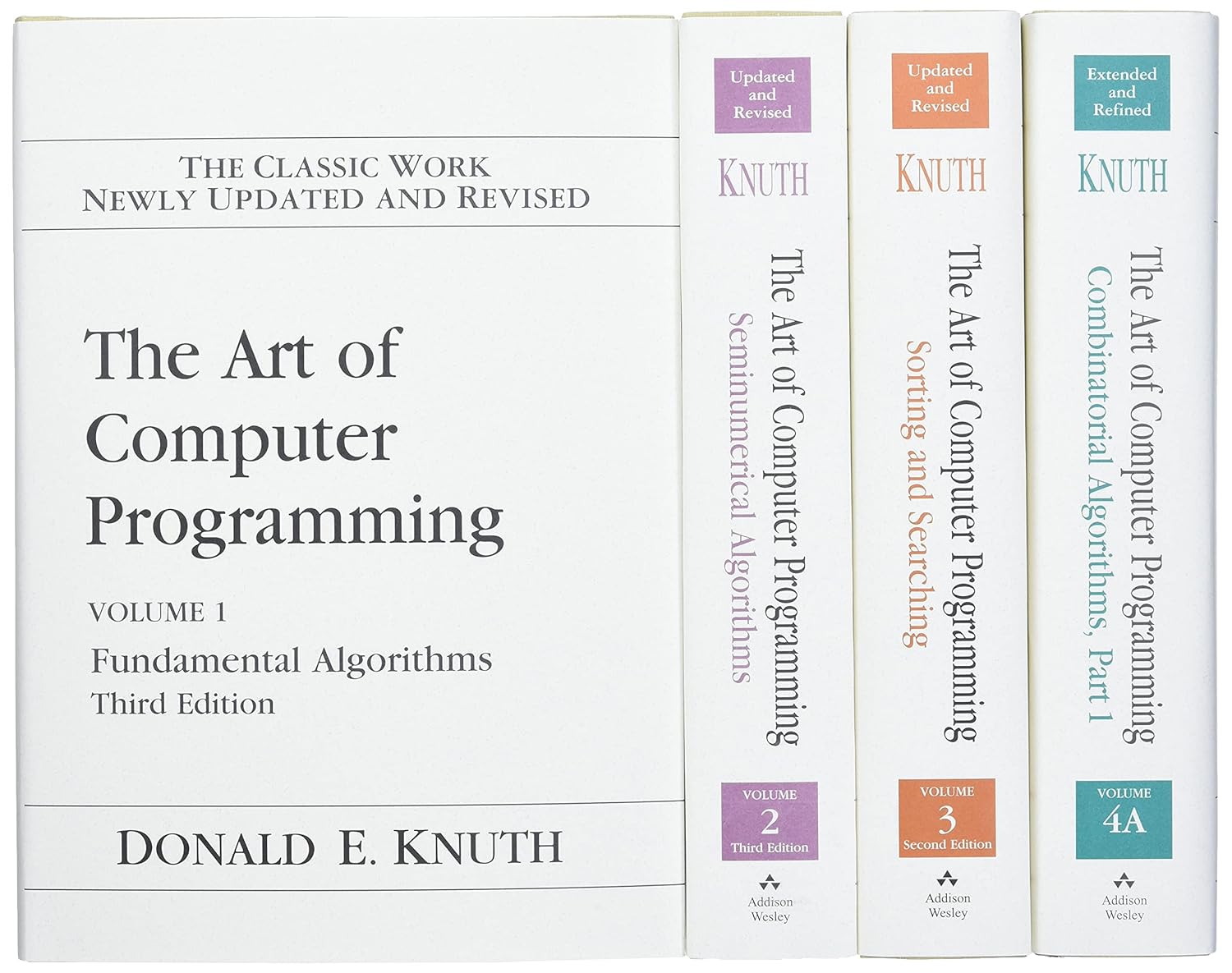 Countless readers have spoken about the profound personal influence of Knuth's work. Scientists have marveled at the beauty and elegance of his analysis, while ordinary programmers have successfully applied his "cookbook" solutions to their day-to-day problems. All have admired Knuth for the breadth, clarity, accuracy, and good humor found in his books. Primarily written as a reference, some people have nevertheless found it possible and interesting to read each volume from beginning to end. A programmer in China even compared the experience to reading a poem. Whatever your background, if you need to do any serious computer programming, you will find your own good reason to make each volume in this series a readily accessible part of your scholarly or professional library. These five books comprise what easily could be the most important set of information on any serious programmer's bookshelf.
Countless readers have spoken about the profound personal influence of Knuth's work. Scientists have marveled at the beauty and elegance of his analysis, while ordinary programmers have successfully applied his "cookbook" solutions to their day-to-day problems. All have admired Knuth for the breadth, clarity, accuracy, and good humor found in his books. Primarily written as a reference, some people have nevertheless found it possible and interesting to read each volume from beginning to end. A programmer in China even compared the experience to reading a poem. Whatever your background, if you need to do any serious computer programming, you will find your own good reason to make each volume in this series a readily accessible part of your scholarly or professional library. These five books comprise what easily could be the most important set of information on any serious programmer's bookshelf.Donald Knuth
2011
1st
English
3168 pages
Introduction to Algorithms
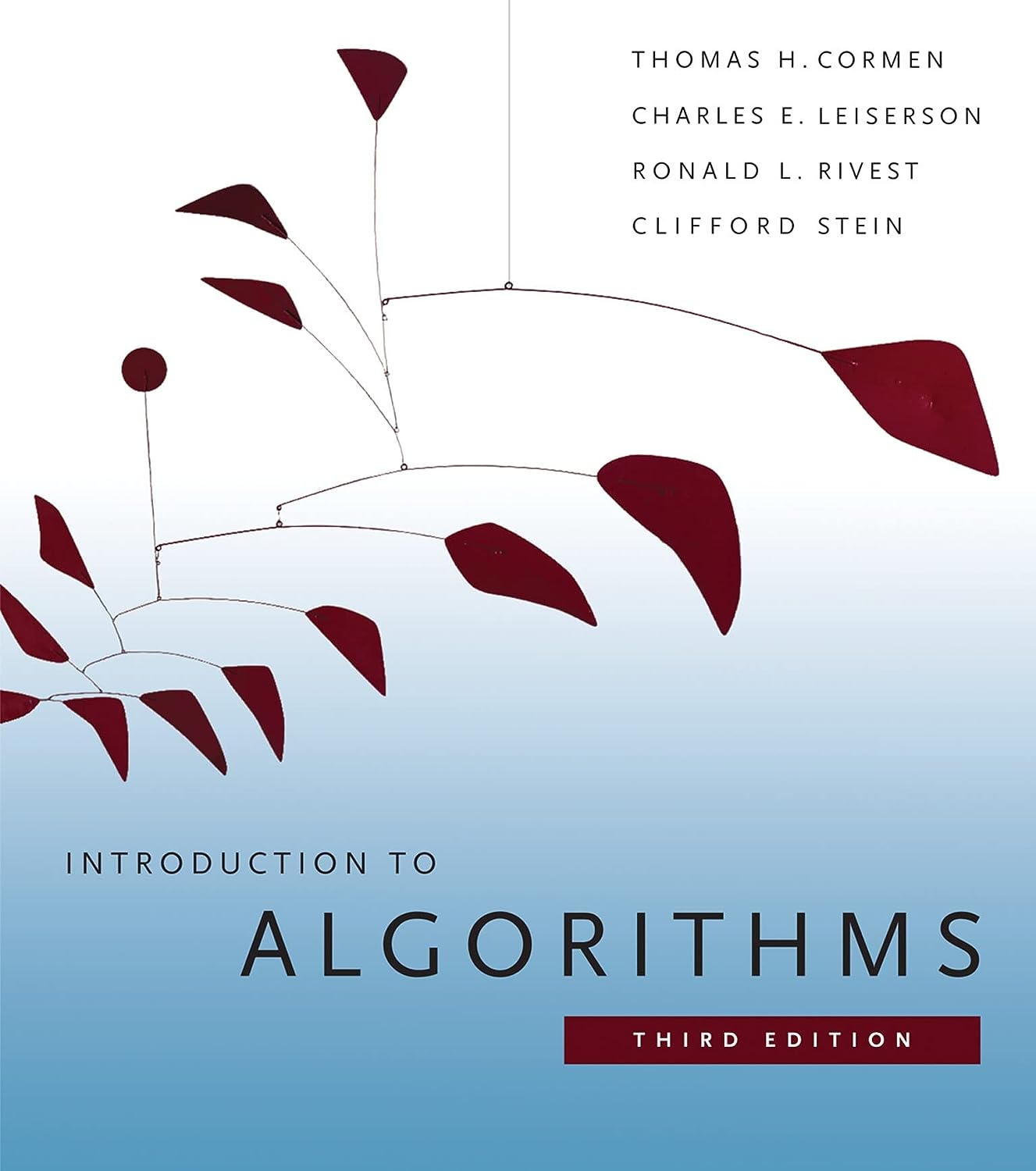 Some books on algorithms are rigorous but incomplete; others cover masses of material but lack rigor. Introduction to Algorithms uniquely combines rigor and comprehensiveness. The book covers a broad range of algorithms in depth, yet makes their design and analysis accessible to all levels of readers. Each chapter is relatively self-contained and can be used as a unit of study. The algorithms are described in English and in a pseudocode designed to be readable by anyone who has done a little programming. The explanations have been kept elementary without sacrificing depth of coverage or mathematical rigor. The first edition became a widely used text in universities worldwide as well as the standard reference for professionals. The second edition featured new chapters on the role of algorithms, probabilistic analysis and randomized algorithms, and linear programming. The third edition has been revised and updated throughout. It includes two completely new chapters, on van Emde Boas trees and multithreaded algorithms, substantial additions to the chapter on recurrence (now called "Divide-and-Conquer"), and an appendix on matrices. It features improved treatment of dynamic programming and greedy algorithms and a new notion of edge-based flow in the material on flow networks. Many exercises and problems have been added for this edition.
Some books on algorithms are rigorous but incomplete; others cover masses of material but lack rigor. Introduction to Algorithms uniquely combines rigor and comprehensiveness. The book covers a broad range of algorithms in depth, yet makes their design and analysis accessible to all levels of readers. Each chapter is relatively self-contained and can be used as a unit of study. The algorithms are described in English and in a pseudocode designed to be readable by anyone who has done a little programming. The explanations have been kept elementary without sacrificing depth of coverage or mathematical rigor. The first edition became a widely used text in universities worldwide as well as the standard reference for professionals. The second edition featured new chapters on the role of algorithms, probabilistic analysis and randomized algorithms, and linear programming. The third edition has been revised and updated throughout. It includes two completely new chapters, on van Emde Boas trees and multithreaded algorithms, substantial additions to the chapter on recurrence (now called "Divide-and-Conquer"), and an appendix on matrices. It features improved treatment of dynamic programming and greedy algorithms and a new notion of edge-based flow in the material on flow networks. Many exercises and problems have been added for this edition.T. H. Cormen
C. E. Leiserson
Ronald L. Rivest
Clifford Stein
2009
3rd
English
1292 pages
Design Patterns: Elements of Reusable Object-Oriented Software
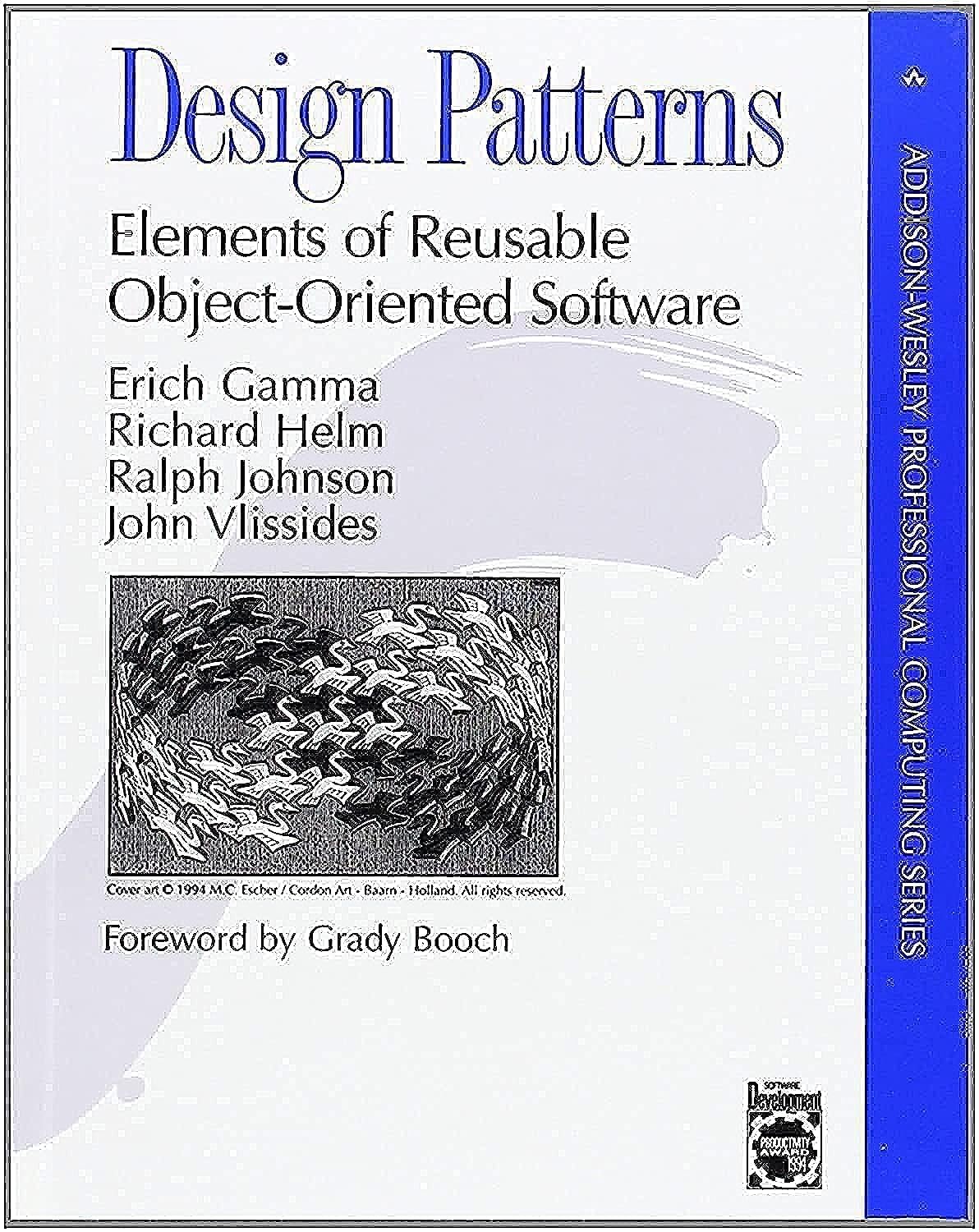 Capturing a wealth of experience about the design of object-oriented software, four top-notch designers present a catalog of simple and succinct solutions to commonly occurring design problems. Previously undocumented, these 23 patterns allow designers to create more flexible, elegant, and ultimately reusable designs without having to rediscover the design solutions themselves. The authors begin by describing what patterns are and how they can help you design object-oriented software. They then go on to systematically name, explain, evaluate, and catalog recurring designs in object-oriented systems. With Design Patterns as your guide, you will learn how these important patterns fit into the software development process, and how you can leverage them to solve your own design problems most efficiently. Each pattern describes the circumstances in which it is applicable, when it can be applied in view of other design constraints, and the consequences and trade-offs of using the pattern within a larger design. All patterns are compiled from real systems and are based on real-world examples. Each pattern also includes code that demonstrates how it may be implemented in object-oriented programming languages like C++ or Smalltalk.
Capturing a wealth of experience about the design of object-oriented software, four top-notch designers present a catalog of simple and succinct solutions to commonly occurring design problems. Previously undocumented, these 23 patterns allow designers to create more flexible, elegant, and ultimately reusable designs without having to rediscover the design solutions themselves. The authors begin by describing what patterns are and how they can help you design object-oriented software. They then go on to systematically name, explain, evaluate, and catalog recurring designs in object-oriented systems. With Design Patterns as your guide, you will learn how these important patterns fit into the software development process, and how you can leverage them to solve your own design problems most efficiently. Each pattern describes the circumstances in which it is applicable, when it can be applied in view of other design constraints, and the consequences and trade-offs of using the pattern within a larger design. All patterns are compiled from real systems and are based on real-world examples. Each pattern also includes code that demonstrates how it may be implemented in object-oriented programming languages like C++ or Smalltalk.Erich Gamma
Richard Helm
Ralph Johnson
John Vlissides
1994
1st
English
416 pages
Head First Design Patterns: A Brain-Friendly Guide
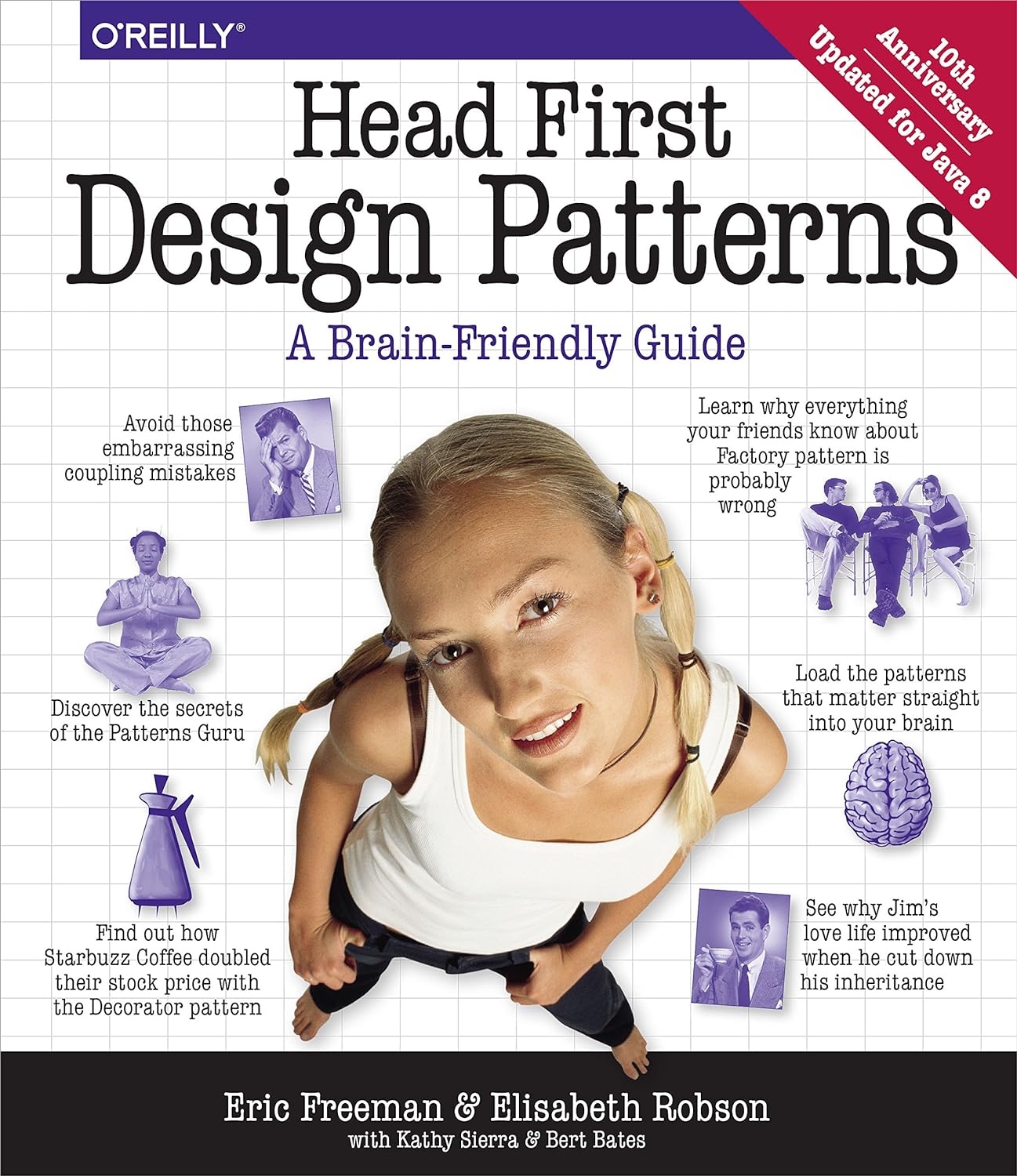 At any given moment, someone struggles with the same software design problems you have. And, chances are, someone else has already solved your problem. This edition of Head First Design Patterns—now updated for Java 8—shows you the tried-and-true, road-tested patterns used by developers to create functional, elegant, reusable, and flexible software. By the time you finish this book, you’ll be able to take advantage of the best design practices and experiences of those who have fought the beast of software design and triumphed.
At any given moment, someone struggles with the same software design problems you have. And, chances are, someone else has already solved your problem. This edition of Head First Design Patterns—now updated for Java 8—shows you the tried-and-true, road-tested patterns used by developers to create functional, elegant, reusable, and flexible software. By the time you finish this book, you’ll be able to take advantage of the best design practices and experiences of those who have fought the beast of software design and triumphed.Eric Freeman
Bert Bates
Kathy Sierra
Elisabeth Robson
2004
1st
English
692 pages
Refactoring: Improving the Design of Existing Code
 Refactoring is a controlled technique for improving the design of an existing code base. Its essence is applying a series of small behavior-preserving transformations, each of which "too small to be worth doing". However the cumulative effect of each of these transformations is quite significant. By doing them in small steps you reduce the risk of introducing errors. You also avoid having the system broken while you are carrying out the restructuring - which allows you to gradually refactor a system over an extended period of time.
Refactoring is a controlled technique for improving the design of an existing code base. Its essence is applying a series of small behavior-preserving transformations, each of which "too small to be worth doing". However the cumulative effect of each of these transformations is quite significant. By doing them in small steps you reduce the risk of introducing errors. You also avoid having the system broken while you are carrying out the restructuring - which allows you to gradually refactor a system over an extended period of time.Martin Fowler
2018
2nd
English
448 pages
The Clean Coder: A Code of Conduct for Professional Programmers
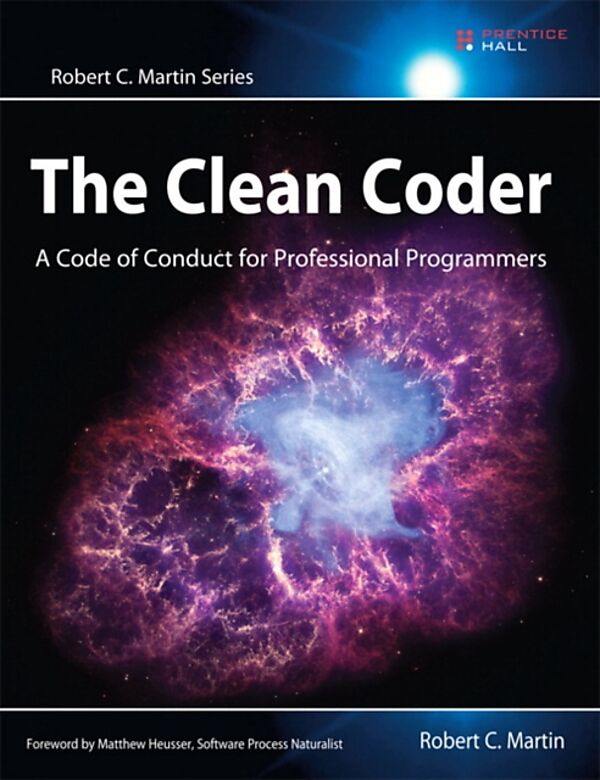 Programmers who endure and succeed amidst swirling uncertainty and nonstop pressure share a common attribute: They care deeply about the practice of creating software. They treat it as a craft. They are professionals. In The Clean Coder: A Code of Conduct for Professional Programmers, legendary software expert Robert C. Martin introduces the disciplines, techniques, tools, and practices of true software craftsmanship. This book is packed with practical advice–about everything from estimating and coding to refactoring and testing. It covers much more than technique: It is about attitude. Martin shows how to approach software development with honor, self-respect, and pride; work well and work clean; communicate and estimate faithfully; face difficult decisions with clarity and honesty; and understand that deep knowledge comes with a responsibility to act.
Programmers who endure and succeed amidst swirling uncertainty and nonstop pressure share a common attribute: They care deeply about the practice of creating software. They treat it as a craft. They are professionals. In The Clean Coder: A Code of Conduct for Professional Programmers, legendary software expert Robert C. Martin introduces the disciplines, techniques, tools, and practices of true software craftsmanship. This book is packed with practical advice–about everything from estimating and coding to refactoring and testing. It covers much more than technique: It is about attitude. Martin shows how to approach software development with honor, self-respect, and pride; work well and work clean; communicate and estimate faithfully; face difficult decisions with clarity and honesty; and understand that deep knowledge comes with a responsibility to act.Robert C. Martin
2011
1st
English
256 pages
97 Things Every Programmer Should Know
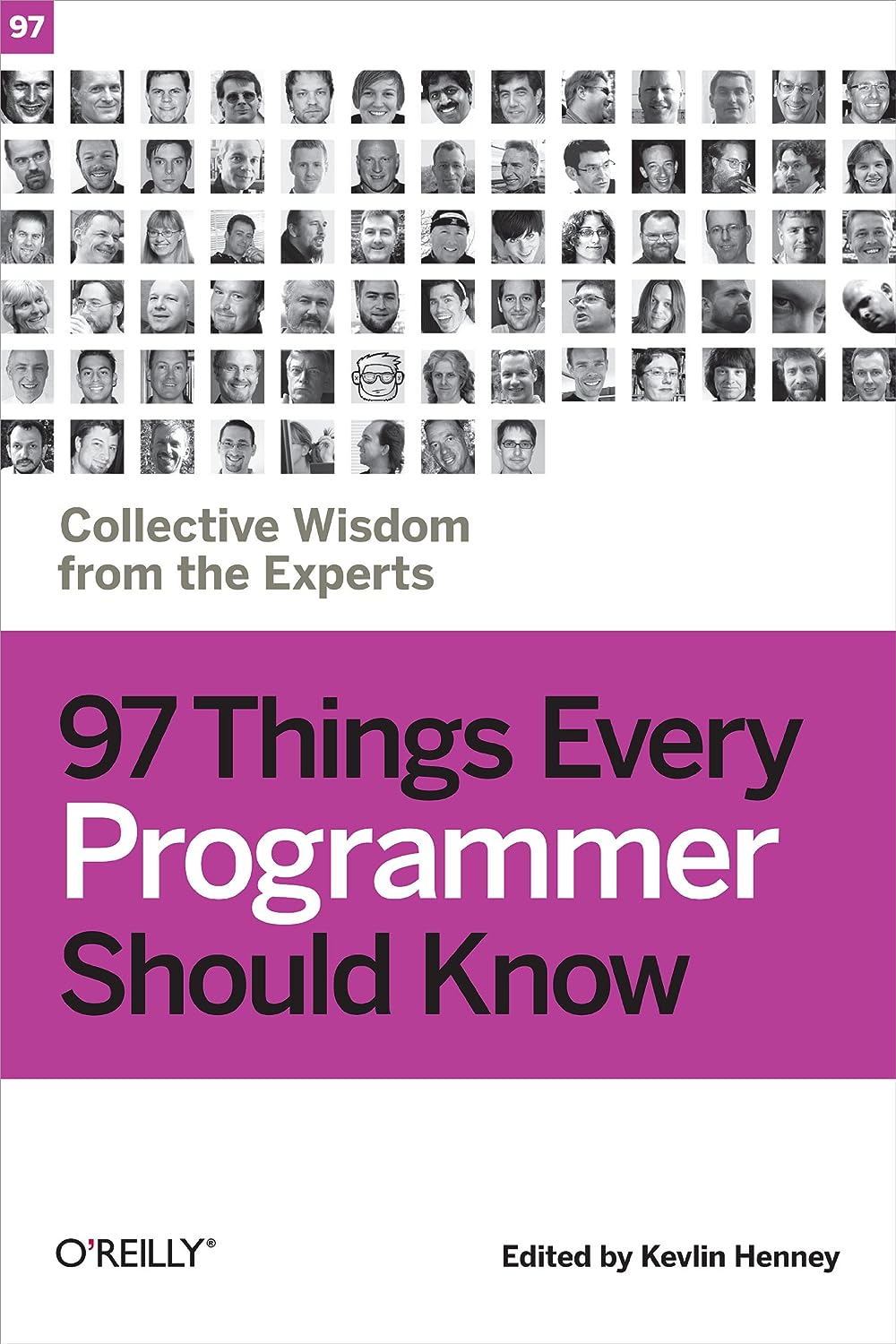 Tap into the wisdom of experts to learn what every programmer should know, no matter what language you use. With the 97 short and extremely useful tips for programmers in this book, you'll expand your skills by adopting new approaches to old problems, learning appropriate best practices, and honing your craft through sound advice. With contributions from some of the most experienced and respected practitioners in the industry--including Michael Feathers, Pete Goodliffe, Diomidis Spinellis, Cay Horstmann, Verity Stob, and many more--this book contains practical knowledge and principles that you can apply to all kinds of projects.
Tap into the wisdom of experts to learn what every programmer should know, no matter what language you use. With the 97 short and extremely useful tips for programmers in this book, you'll expand your skills by adopting new approaches to old problems, learning appropriate best practices, and honing your craft through sound advice. With contributions from some of the most experienced and respected practitioners in the industry--including Michael Feathers, Pete Goodliffe, Diomidis Spinellis, Cay Horstmann, Verity Stob, and many more--this book contains practical knowledge and principles that you can apply to all kinds of projects.Kevlin Henney
2010
1st
English
255 pages
Structure and Interpretation of Computer Programs
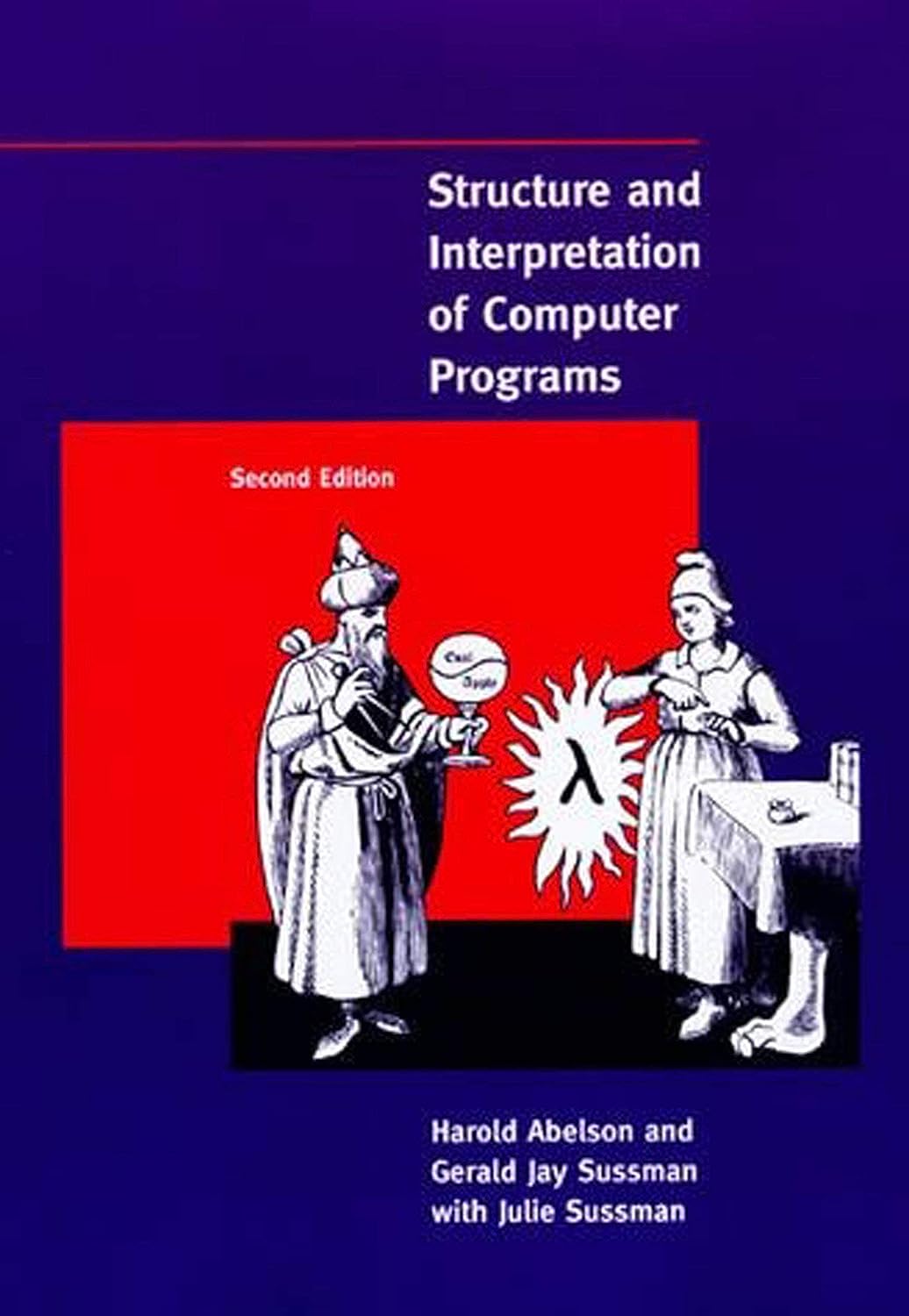 Structure and Interpretation of Computer Programs has had a dramatic impact on computer science curricula over the past decade. This long-awaited revision contains changes throughout the text. There are new implementations of most of the major programming systems in the book, including the interpreters and compilers, and the authors have incorporated many small changes that reflect their experience teaching the course at MIT since the first edition was published. A new theme has been introduced that emphasizes the central role played by different approaches to dealing with time in computational models: objects with state, concurrent programming, functional programming and lazy evaluation, and nondeterministic programming. There are new example sections on higher-order procedures in graphics and on applications of stream processing in numerical programming, and many new exercises. In addition, all the programs have been reworked to run in any Scheme implementation that adheres to the IEEE standard.
Structure and Interpretation of Computer Programs has had a dramatic impact on computer science curricula over the past decade. This long-awaited revision contains changes throughout the text. There are new implementations of most of the major programming systems in the book, including the interpreters and compilers, and the authors have incorporated many small changes that reflect their experience teaching the course at MIT since the first edition was published. A new theme has been introduced that emphasizes the central role played by different approaches to dealing with time in computational models: objects with state, concurrent programming, functional programming and lazy evaluation, and nondeterministic programming. There are new example sections on higher-order procedures in graphics and on applications of stream processing in numerical programming, and many new exercises. In addition, all the programs have been reworked to run in any Scheme implementation that adheres to the IEEE standard.Harold Abelson
G. J. Sussman
Julie Sussman
1996
1st
English
657 pages
Testing books
The Art of Unit Testing
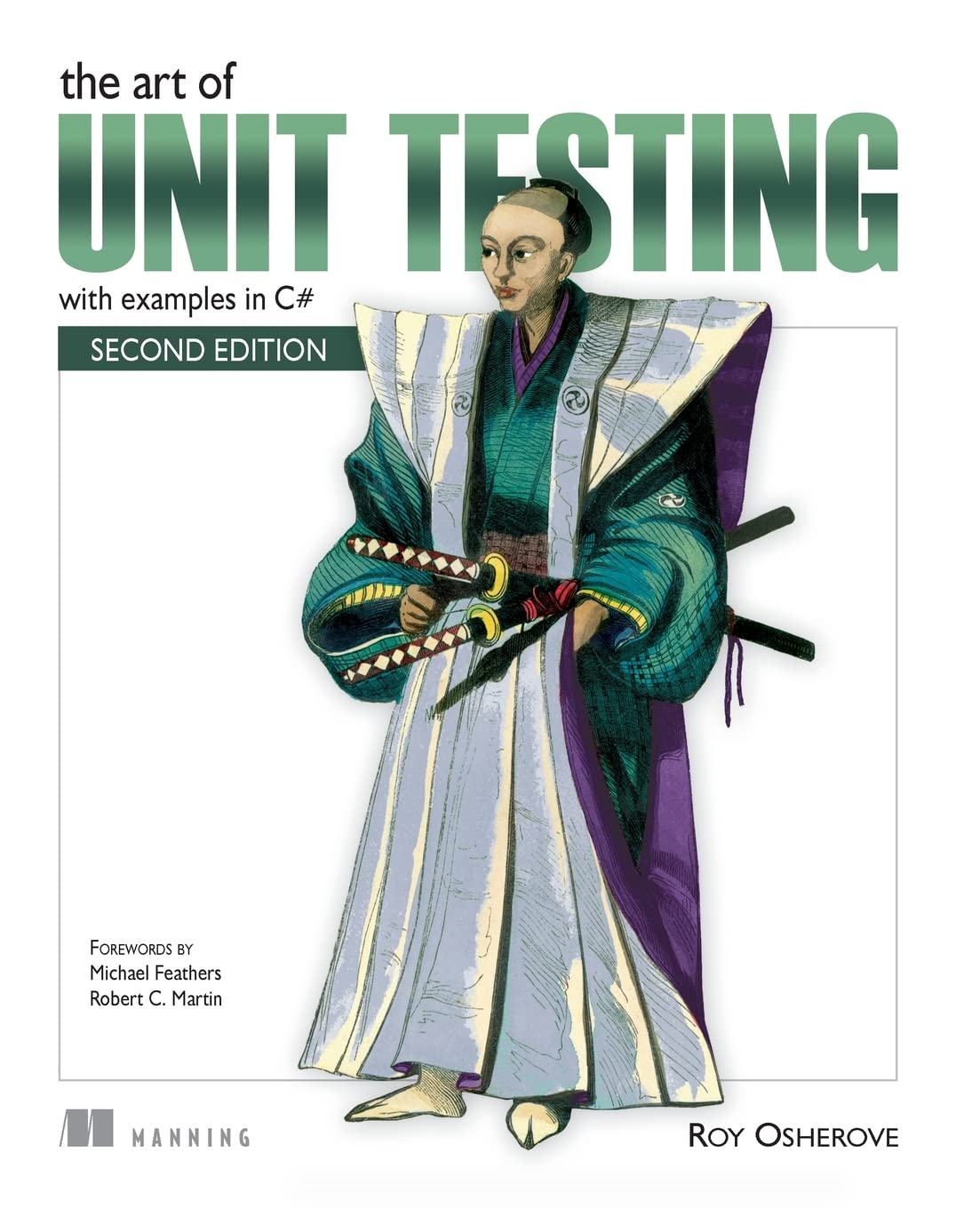 The Art of Unit Testing, Second Edition guides you step by step from writing your first simple tests to developing robust test sets that are maintainable, readable, and trustworthy. You'll master the foundational ideas and quickly move to high-value subjects like mocks, stubs, and isolation, including frameworks such as Moq, FakeItEasy, and Typemock Isolator. You'll explore test patterns and organization, working with legacy code, and even "untestable" code. Along the way, you'll learn about integration testing and techniques and tools for testing databases and other technologies.
The Art of Unit Testing, Second Edition guides you step by step from writing your first simple tests to developing robust test sets that are maintainable, readable, and trustworthy. You'll master the foundational ideas and quickly move to high-value subjects like mocks, stubs, and isolation, including frameworks such as Moq, FakeItEasy, and Typemock Isolator. You'll explore test patterns and organization, working with legacy code, and even "untestable" code. Along the way, you'll learn about integration testing and techniques and tools for testing databases and other technologies.Roy Osherove
2013
2nd
English
296 pages
The Art of Software Testing
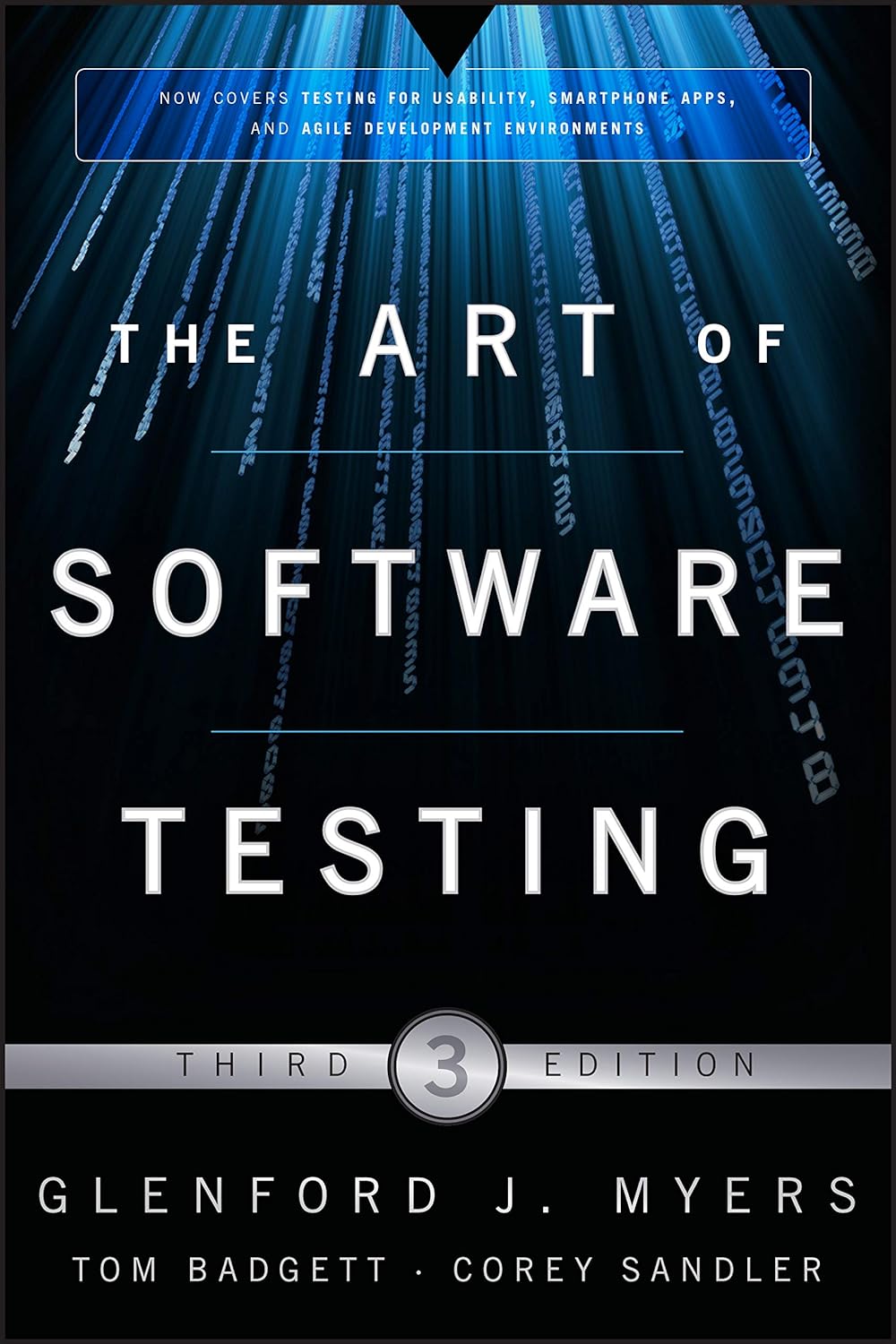 The hardware and software of computing have changed markedly in the three decades since the first edition of The Art of Software Testing, but this book's powerful underlying analysis has stood the test of time. Whereas most books on software testing target particular development techniques, languages, or testing methods, The Art of Software Testing, Third Edition provides a brief but powerful and comprehensive presentation of time-proven software testing approaches. If your software development project is mission critical, this book is an investment that will pay for itself with the first bug you find.
The hardware and software of computing have changed markedly in the three decades since the first edition of The Art of Software Testing, but this book's powerful underlying analysis has stood the test of time. Whereas most books on software testing target particular development techniques, languages, or testing methods, The Art of Software Testing, Third Edition provides a brief but powerful and comprehensive presentation of time-proven software testing approaches. If your software development project is mission critical, this book is an investment that will pay for itself with the first bug you find.Glenford J. Myers
Corey Sandler
Tom Badgett
2011
3rd
English
256 pages
Software Testing
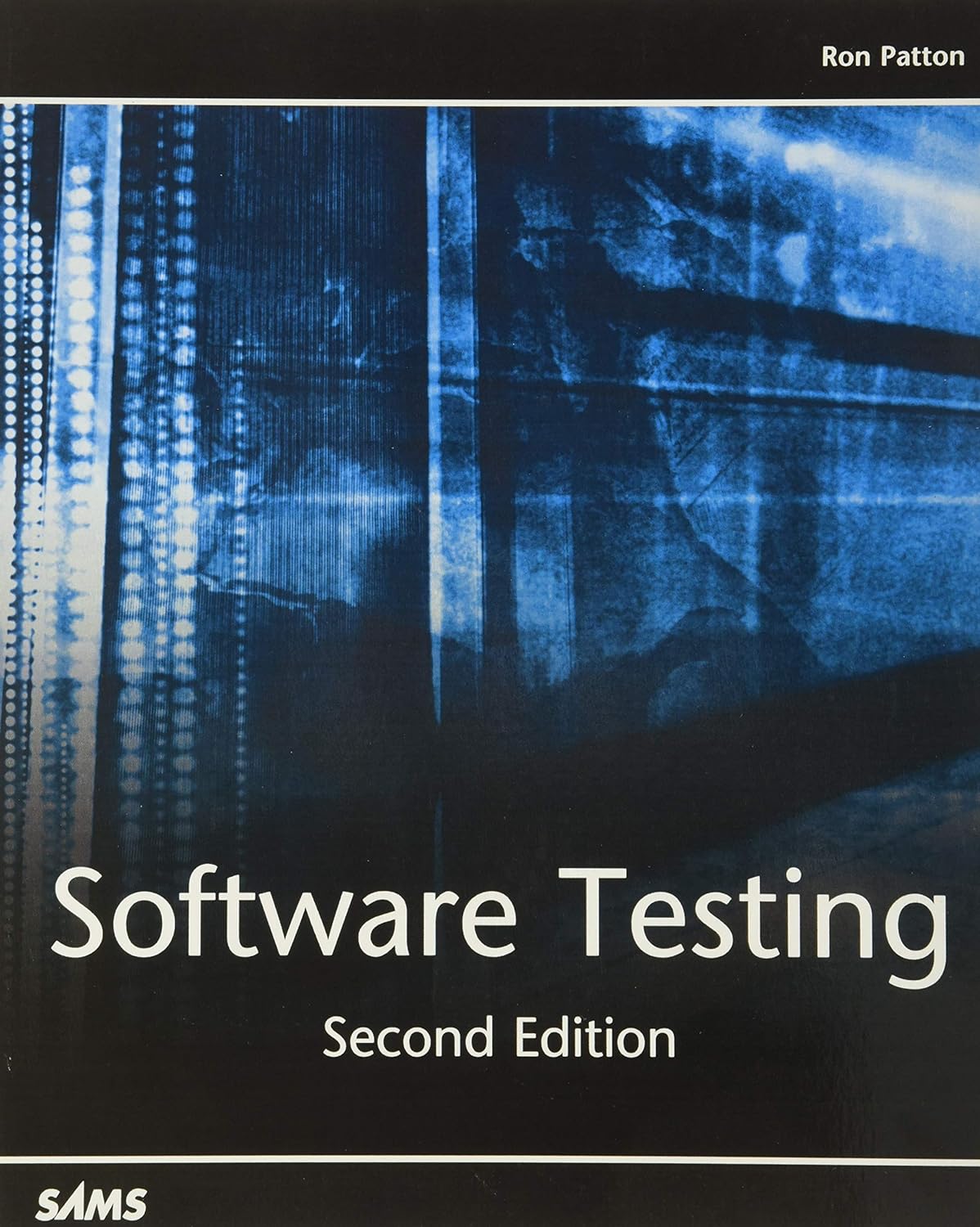 Software Testing, Second Edition provides practical insight into the world of software testing and quality assurance. Learn how to find problems in any computer program, how to plan an effective test approach and how to tell when software is ready for release. Updated from the previous edition in 2000 to include a chapter that specifically deals with testing software for security bugs, the processes and techniques used throughout the book are timeless. This book is an excellent investment if you want to better understand what your Software Test team does or you want to write better software. Software testing is one of the invisible jobs in the software industry. Everyone has heard of computer programmers but few people realize there are nearly as many people behind the scenes with job titles such as Software Tester, Software Quality Assurance Engineer, Software Test Engineer, and Software Test Technician. Microsoft alone hires hundreds of people for these positions each year. There are also many companies whose sole purpose is providing software test consulting and software testing services. The first edition of Software Testing was published in November 2000. Although the processes and techniques used in testing computer software are timeless, this title will be brought up-to-date by adding a chapter that specifically deals with testing software for security bugs and revisiting the rest of the book to update examples and references.
Software Testing, Second Edition provides practical insight into the world of software testing and quality assurance. Learn how to find problems in any computer program, how to plan an effective test approach and how to tell when software is ready for release. Updated from the previous edition in 2000 to include a chapter that specifically deals with testing software for security bugs, the processes and techniques used throughout the book are timeless. This book is an excellent investment if you want to better understand what your Software Test team does or you want to write better software. Software testing is one of the invisible jobs in the software industry. Everyone has heard of computer programmers but few people realize there are nearly as many people behind the scenes with job titles such as Software Tester, Software Quality Assurance Engineer, Software Test Engineer, and Software Test Technician. Microsoft alone hires hundreds of people for these positions each year. There are also many companies whose sole purpose is providing software test consulting and software testing services. The first edition of Software Testing was published in November 2000. Although the processes and techniques used in testing computer software are timeless, this title will be brought up-to-date by adding a chapter that specifically deals with testing software for security bugs and revisiting the rest of the book to update examples and references.Ron Patton
2005
2nd
English
408 pages
Test Driven Development
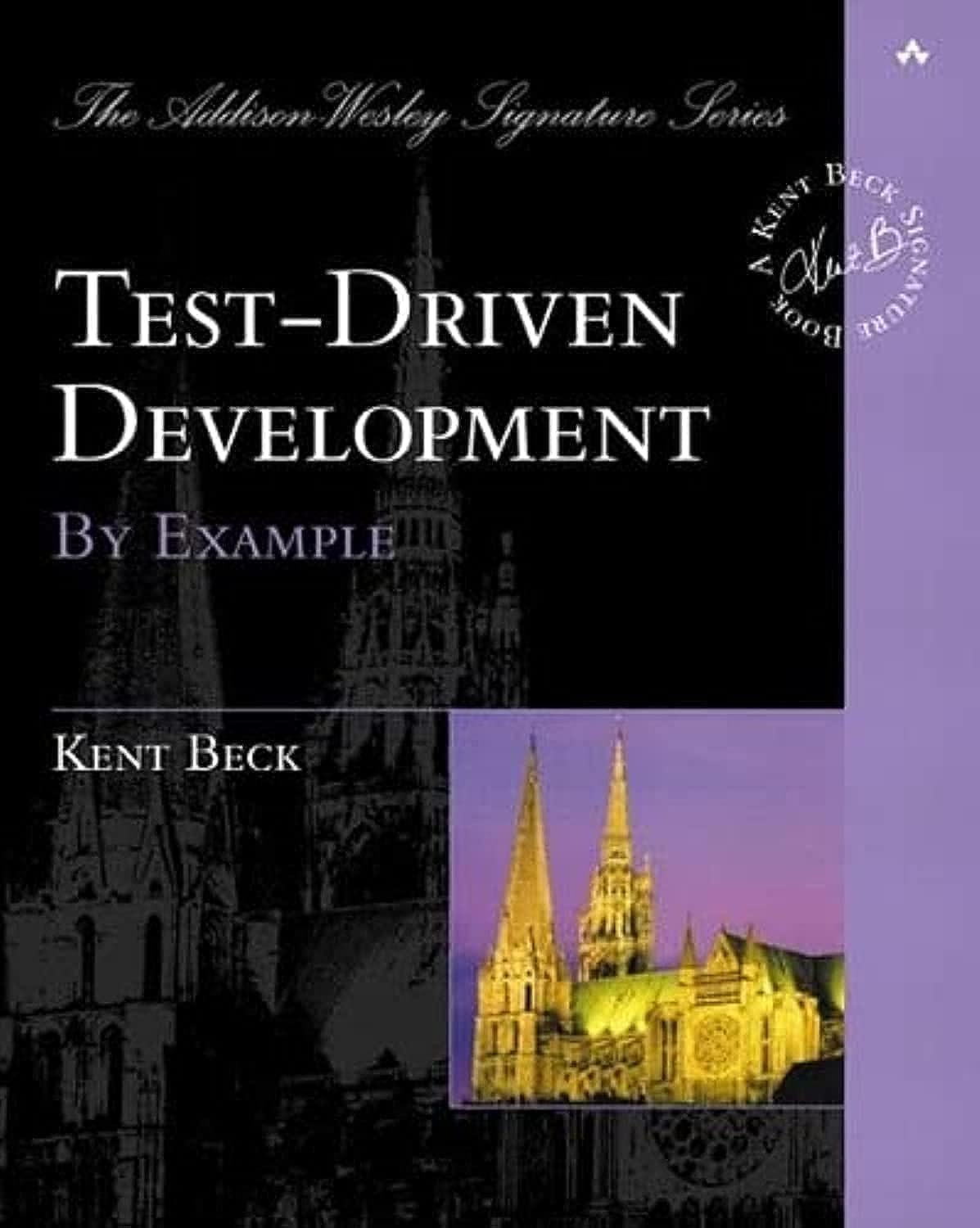 Quite simply, test-driven development is meant to eliminate fear in application development. While some fear is healthy (often viewed as a conscience that tells programmers to "be careful!"), the author believes that byproducts of fear include tentative, grumpy, and uncommunicative programmers who are unable to absorb constructive criticism. When programming teams buy into TDD, they immediately see positive results. They eliminate the fear involved in their jobs, and are better equipped to tackle the difficult challenges that face them. TDD eliminates tentative traits, it teaches programmers to communicate, and it encourages team members to seek out criticism However, even the author admits that grumpiness must be worked out individually! In short, the premise behind TDD is that code should be continually tested and refactored. Kent Beck teaches programmers by example, so they can painlessly and dramatically increase the quality of their work.
Quite simply, test-driven development is meant to eliminate fear in application development. While some fear is healthy (often viewed as a conscience that tells programmers to "be careful!"), the author believes that byproducts of fear include tentative, grumpy, and uncommunicative programmers who are unable to absorb constructive criticism. When programming teams buy into TDD, they immediately see positive results. They eliminate the fear involved in their jobs, and are better equipped to tackle the difficult challenges that face them. TDD eliminates tentative traits, it teaches programmers to communicate, and it encourages team members to seek out criticism However, even the author admits that grumpiness must be worked out individually! In short, the premise behind TDD is that code should be continually tested and refactored. Kent Beck teaches programmers by example, so they can painlessly and dramatically increase the quality of their work.Kent Beck
2002
1st
English
240 pages
Lessons Learned in Software Testing
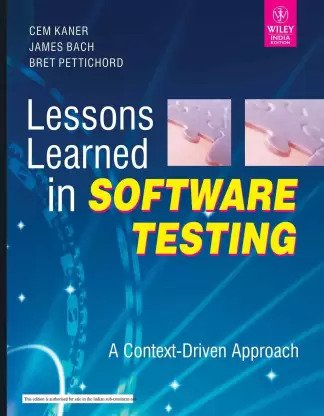 Decades of software testing experience condensed into the most important lessons learned. The world's leading software testing experts lend you their wisdom and years of experience to help you avoid the most common mistakes in testing software. Each lesson is an assertion related to software testing, followed by an explanation or example that shows you the how, when, and why of the testing lesson. More than just tips, tricks, and pitfalls to avoid, Lessons Learned in Software Testing speeds you through the critical testing phase of the software development project without the extensive trial and error it normally takes to do so.
Decades of software testing experience condensed into the most important lessons learned. The world's leading software testing experts lend you their wisdom and years of experience to help you avoid the most common mistakes in testing software. Each lesson is an assertion related to software testing, followed by an explanation or example that shows you the how, when, and why of the testing lesson. More than just tips, tricks, and pitfalls to avoid, Lessons Learned in Software Testing speeds you through the critical testing phase of the software development project without the extensive trial and error it normally takes to do so.Cem Kaner
James Bach
Bret Pettichord
2001
1st
English
320 pages
Agile Testing: A Practical Guide for Testers and Agile Teams
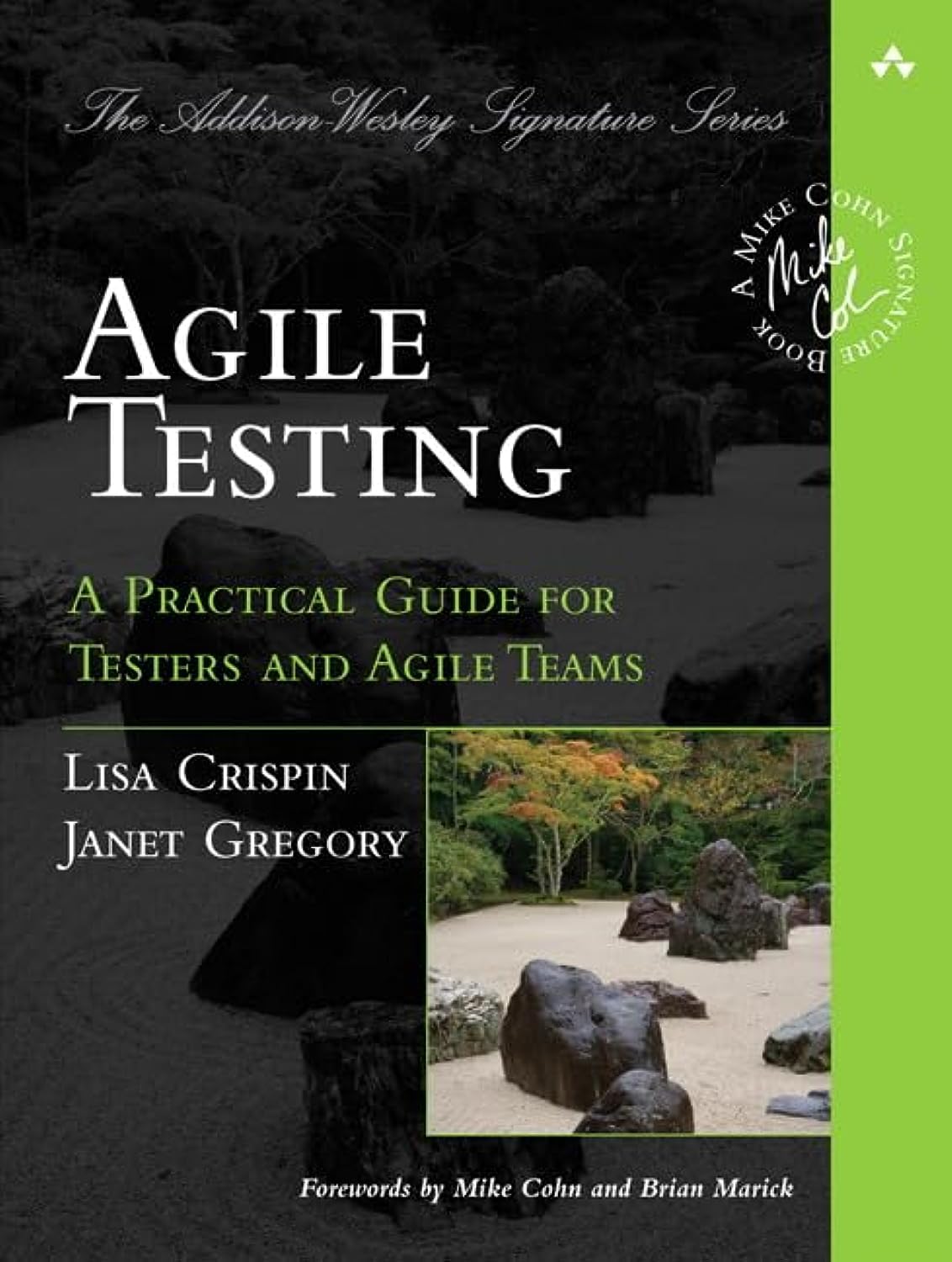 Two of the industry’s most experienced agile testing practitioners and consultants, Lisa Crispin and Janet Gregory, have teamed up to bring you the definitive answers to these questions and many others. In Agile Testing, Crispin and Gregory define agile testing and illustrate the tester’s role with examples from real agile teams. They teach you how to use the agile testing quadrants to identify what testing is needed, who should do it, and what tools might help. The book chronicles an agile software development iteration from the viewpoint of a tester and explains the seven key success factors of agile testing.
Two of the industry’s most experienced agile testing practitioners and consultants, Lisa Crispin and Janet Gregory, have teamed up to bring you the definitive answers to these questions and many others. In Agile Testing, Crispin and Gregory define agile testing and illustrate the tester’s role with examples from real agile teams. They teach you how to use the agile testing quadrants to identify what testing is needed, who should do it, and what tools might help. The book chronicles an agile software development iteration from the viewpoint of a tester and explains the seven key success factors of agile testing.Lisa Crispin
Janet Gregory
2008
1st
English
576 pages
DevOps books
The Phoenix Project
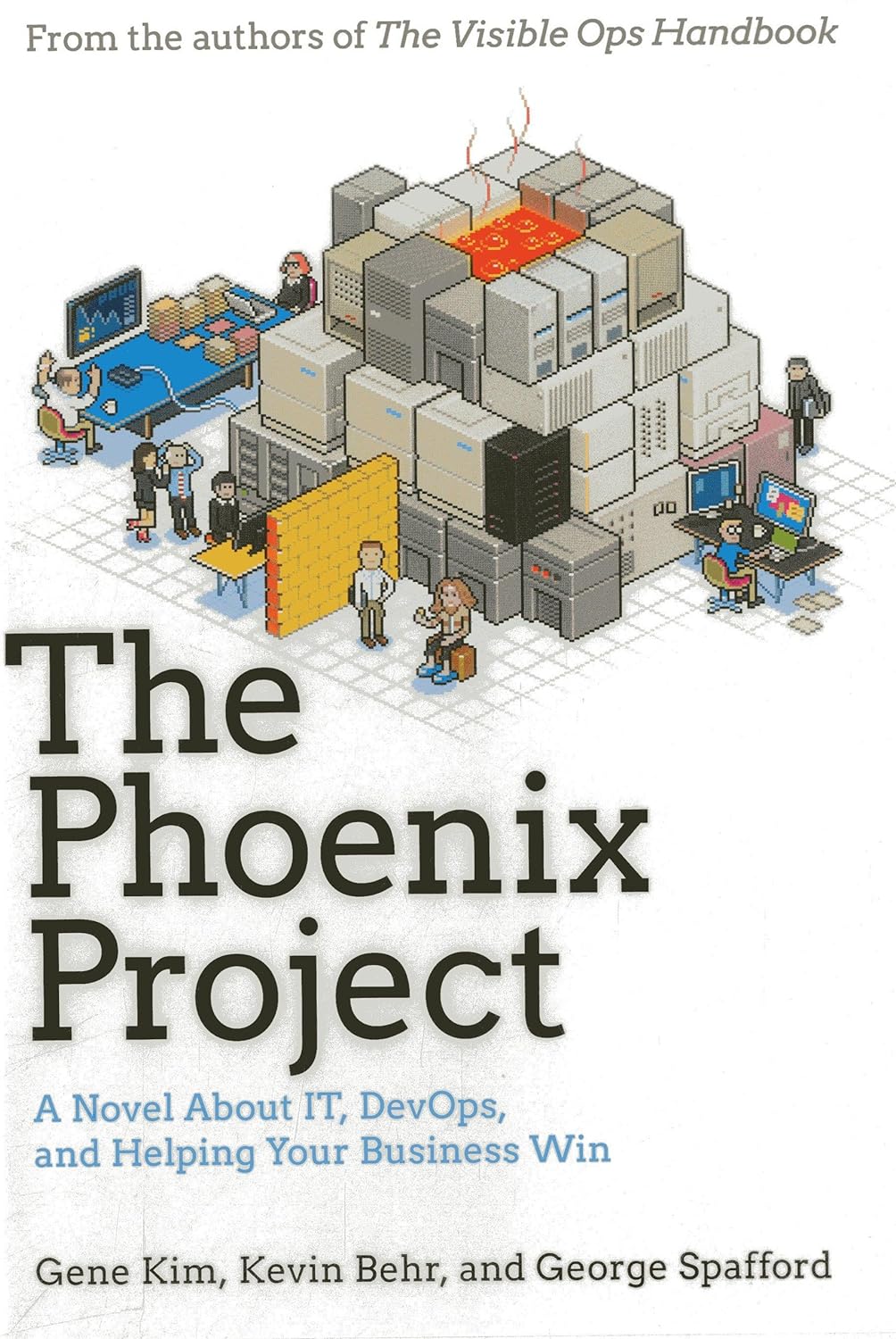 Bill is an IT manager at Parts Unlimited. It's Tuesday morning and on his drive into the office, Bill gets a call from the CEO. The company's new IT initiative, code named Phoenix Project, is critical to the future of Parts Unlimited, but the project is massively over budget and very late. The CEO wants Bill to report directly to him and fix the mess in ninety days or else Bill's entire department will be outsourced. With the help of a prospective board member and his mysterious philosophy of The Three Ways, Bill starts to see that IT work has more in common with manufacturing plant work than he ever imagined. With the clock ticking, Bill must organize work flow streamline interdepartmental communications, and effectively serve the other business functions at Parts Unlimited. In a fast-paced and entertaining style, three luminaries of the DevOps movement deliver a story that anyone who works in IT will recognize. Readers will not only learn how to improve their own IT organizations, they'll never view IT the same way again.
Bill is an IT manager at Parts Unlimited. It's Tuesday morning and on his drive into the office, Bill gets a call from the CEO. The company's new IT initiative, code named Phoenix Project, is critical to the future of Parts Unlimited, but the project is massively over budget and very late. The CEO wants Bill to report directly to him and fix the mess in ninety days or else Bill's entire department will be outsourced. With the help of a prospective board member and his mysterious philosophy of The Three Ways, Bill starts to see that IT work has more in common with manufacturing plant work than he ever imagined. With the clock ticking, Bill must organize work flow streamline interdepartmental communications, and effectively serve the other business functions at Parts Unlimited. In a fast-paced and entertaining style, three luminaries of the DevOps movement deliver a story that anyone who works in IT will recognize. Readers will not only learn how to improve their own IT organizations, they'll never view IT the same way again.Gene Kim
Kevin Behr
George Spafford
2013
1st
English
345 pages
The Unicorn Project
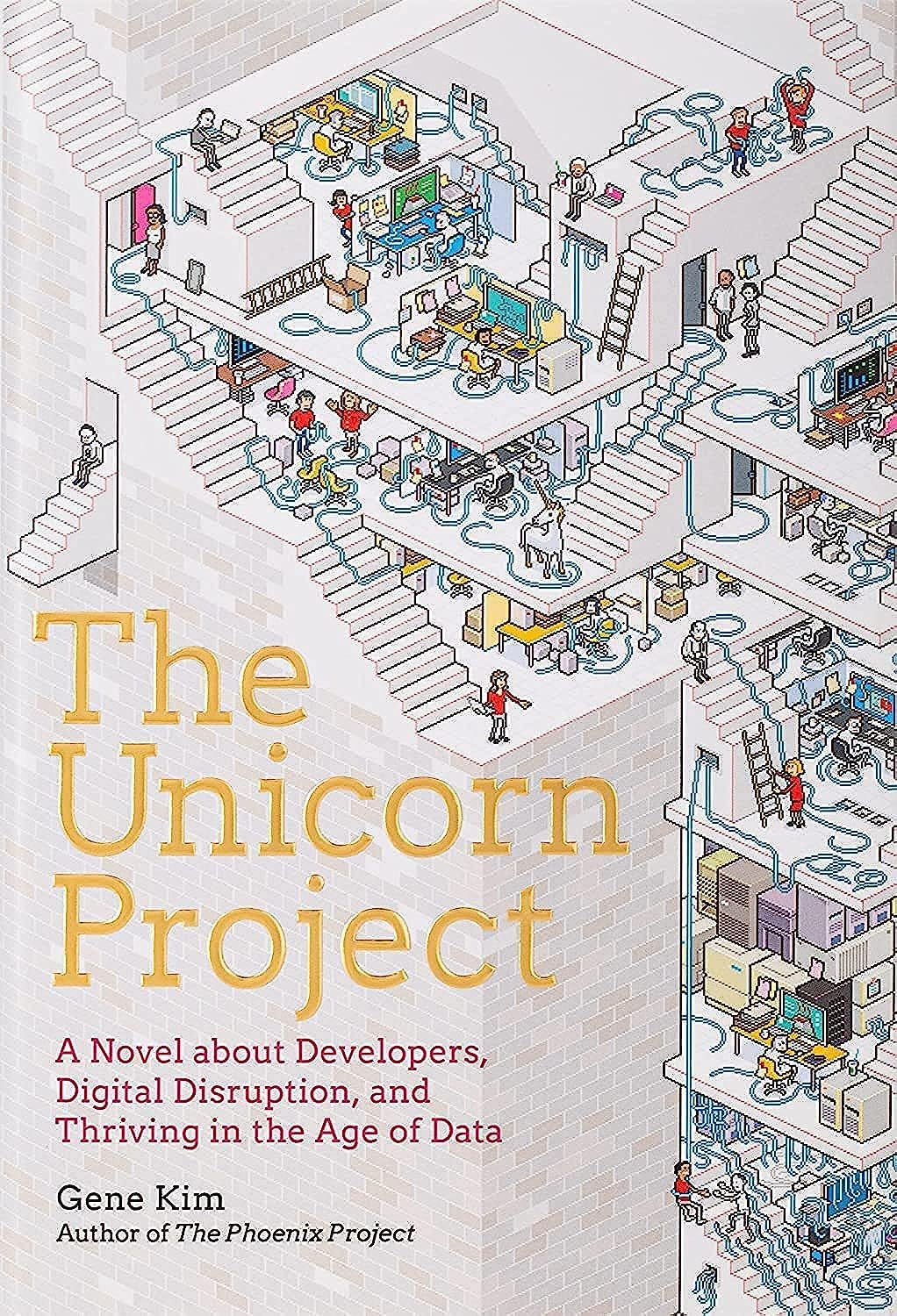 This highly anticipated follow-up to the bestselling title The Phoenix Project takes another look at Parts Unlimited, this time from the perspective of software development. In The Unicorn Project, we follow Maxine, a senior lead developer and architect, as she is exiled to the Phoenix Project, to the horror of her friends and colleagues, as punishment for contributing to a payroll outage. She tries to survive in what feels like a heartless and uncaring bureaucracy and to work within a system where no one can get anything done without endless committees, paperwork, and approvals. One day, she is approached by a ragtag bunch of misfits who say they want to overthrow the existing order, to liberate developers, to bring joy back to technology work, and to enable the business to win in a time of digital disruption. To her surprise, she finds herself drawn ever further into this movement, eventually becoming one of the leaders of the Rebellion, which puts her in the crosshairs of some familiar and very dangerous enemies. The Age of Software is here, and another mass extinction event looms—this is a story about rebel developers and business leaders working together, racing against time to innovate, survive, and thrive in a time of unprecedented uncertainty...and opportunity.
This highly anticipated follow-up to the bestselling title The Phoenix Project takes another look at Parts Unlimited, this time from the perspective of software development. In The Unicorn Project, we follow Maxine, a senior lead developer and architect, as she is exiled to the Phoenix Project, to the horror of her friends and colleagues, as punishment for contributing to a payroll outage. She tries to survive in what feels like a heartless and uncaring bureaucracy and to work within a system where no one can get anything done without endless committees, paperwork, and approvals. One day, she is approached by a ragtag bunch of misfits who say they want to overthrow the existing order, to liberate developers, to bring joy back to technology work, and to enable the business to win in a time of digital disruption. To her surprise, she finds herself drawn ever further into this movement, eventually becoming one of the leaders of the Rebellion, which puts her in the crosshairs of some familiar and very dangerous enemies. The Age of Software is here, and another mass extinction event looms—this is a story about rebel developers and business leaders working together, racing against time to innovate, survive, and thrive in a time of unprecedented uncertainty...and opportunity.Gene Kim
2019
1st
English
352 pages
The DevOps Handbook
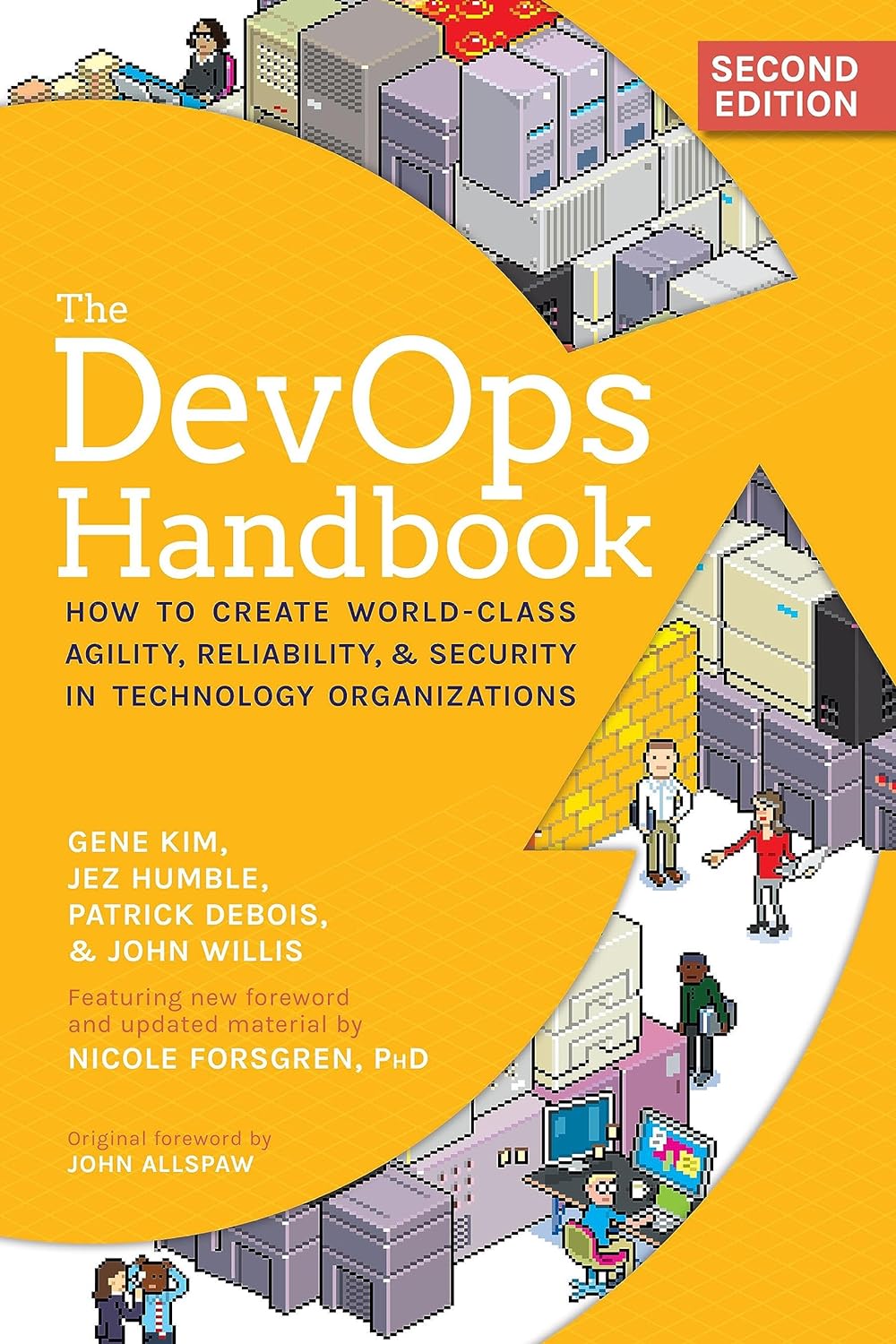 For years, The DevOps Handbook has been the definitive guide for taking the successes laid out in the bestselling The Phoenix Project and applying them in any organization. Now, with this fully updated and expanded edition, it's time to take DevOps out of the IT department and apply it across the full business. Technology is now at the core of every company, no matter the business model or product. The theories and practices laid out in The DevOps Handbook are tools to be used by anyone from across the organization to create joy and succeed in the marketplace. The second edition features 15 new case studies, including stories from Adidas, American Airlines, Fannie Mae, Target, and the US Air Force. In addition, renowned researcher and coauthor of Accelerate, Dr. Nicole Forsgren, provides her insights through new and updated material and research. With over 100 pages of new content throughout the book, this expanded edition is a must read for anyone who works with technology.
For years, The DevOps Handbook has been the definitive guide for taking the successes laid out in the bestselling The Phoenix Project and applying them in any organization. Now, with this fully updated and expanded edition, it's time to take DevOps out of the IT department and apply it across the full business. Technology is now at the core of every company, no matter the business model or product. The theories and practices laid out in The DevOps Handbook are tools to be used by anyone from across the organization to create joy and succeed in the marketplace. The second edition features 15 new case studies, including stories from Adidas, American Airlines, Fannie Mae, Target, and the US Air Force. In addition, renowned researcher and coauthor of Accelerate, Dr. Nicole Forsgren, provides her insights through new and updated material and research. With over 100 pages of new content throughout the book, this expanded edition is a must read for anyone who works with technology.Gene Kim
Jez Humble
Patrick Debois
John Willis
Nicole Forsgren
2021
2nd
English
528 pages
Continuous Delivery
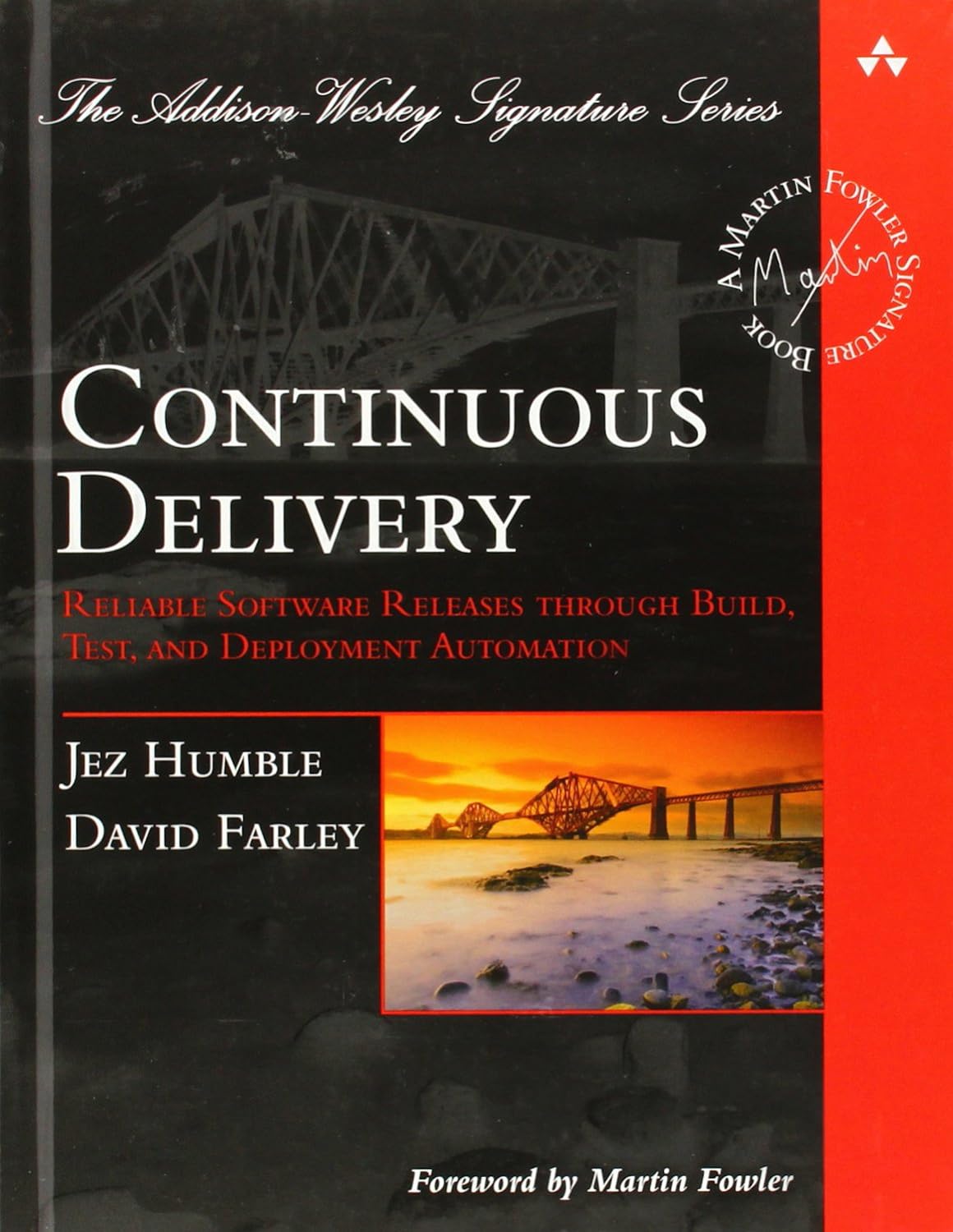 Getting software released to users is often a painful, risky, and time-consuming process.This groundbreaking new book sets out the principles and technical practices that enable rapid, incremental delivery of high quality, valuable new functionality to users. Through automation of the build, deployment, and testing process, and improved collaboration between developers, testers, and operations, delivery teams can get changes released in a matter of hours―sometimes even minutes–no matter what the size of a project or the complexity of its code base. Jez Humble and David Farley begin by presenting the foundations of a rapid, reliable, low-risk delivery process. Next, they introduce the “deployment pipeline,” an automated process for managing all changes, from check-in to release. Finally, they discuss the “ecosystem” needed to support continuous delivery, from infrastructure, data and configuration management to governance. The authors introduce state-of-the-art techniques, including automated infrastructure management and data migration, and the use of virtualization. For each, they review key issues, identify best practices, and demonstrate how to mitigate risks.
Getting software released to users is often a painful, risky, and time-consuming process.This groundbreaking new book sets out the principles and technical practices that enable rapid, incremental delivery of high quality, valuable new functionality to users. Through automation of the build, deployment, and testing process, and improved collaboration between developers, testers, and operations, delivery teams can get changes released in a matter of hours―sometimes even minutes–no matter what the size of a project or the complexity of its code base. Jez Humble and David Farley begin by presenting the foundations of a rapid, reliable, low-risk delivery process. Next, they introduce the “deployment pipeline,” an automated process for managing all changes, from check-in to release. Finally, they discuss the “ecosystem” needed to support continuous delivery, from infrastructure, data and configuration management to governance. The authors introduce state-of-the-art techniques, including automated infrastructure management and data migration, and the use of virtualization. For each, they review key issues, identify best practices, and demonstrate how to mitigate risks.Jez Humble
David Farley
2010
1st
English
512 pages
Accelerate: The Science of Lean Software and DevOps
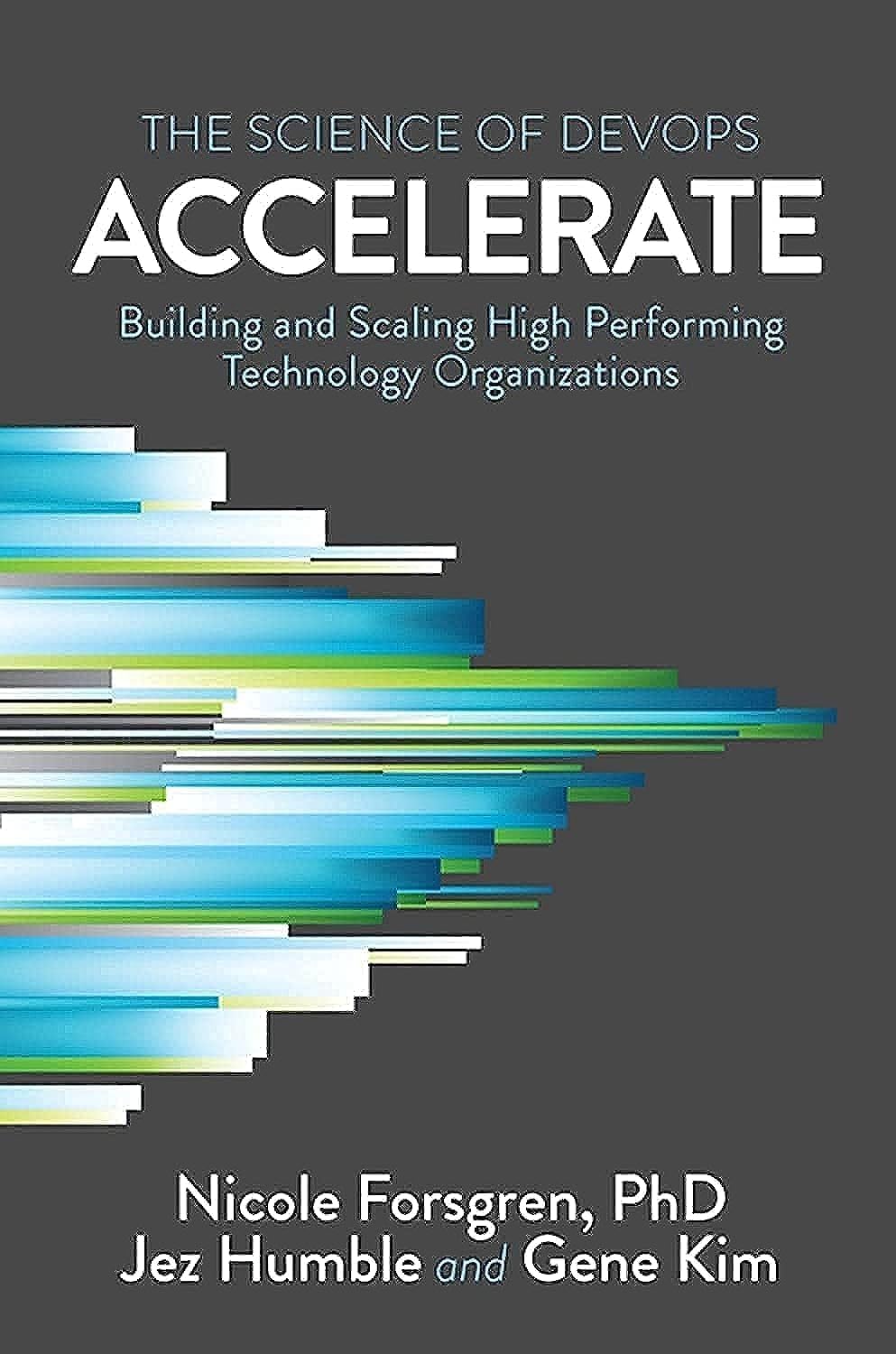 How can we apply technology to drive business value? For years, we've been told that the performance of software delivery teams doesn't matter―that it can't provide a competitive advantage to our companies. Through four years of groundbreaking research to include data collected from the State of DevOps reports conducted with Puppet, Dr. Nicole Forsgren, Jez Humble, and Gene Kim set out to find a way to measure software delivery performance―and what drives it―using rigorous statistical methods. This book presents both the findings and the science behind that research, making the information accessible for readers to apply in their own organizations. Readers will discover how to measure the performance of their teams, and what capabilities they should invest in to drive higher performance. This book is ideal for management at every level.
How can we apply technology to drive business value? For years, we've been told that the performance of software delivery teams doesn't matter―that it can't provide a competitive advantage to our companies. Through four years of groundbreaking research to include data collected from the State of DevOps reports conducted with Puppet, Dr. Nicole Forsgren, Jez Humble, and Gene Kim set out to find a way to measure software delivery performance―and what drives it―using rigorous statistical methods. This book presents both the findings and the science behind that research, making the information accessible for readers to apply in their own organizations. Readers will discover how to measure the performance of their teams, and what capabilities they should invest in to drive higher performance. This book is ideal for management at every level.Nicole Forsgren
Jez Humble
Gene Kim
2018
1st
English
288 pages
Cloud Native DevOps with Kubernetes
 Kubernetes is the operating system of the cloud native world, providing a reliable and scalable platform for running containerized workloads. In this friendly, pragmatic book, cloud experts John Arundel and Justin Domingus show you what Kubernetes can do―and what you can do with it. You’ll learn all about the Kubernetes ecosystem, and use battle-tested solutions to everyday problems. You’ll build, step by step, an example cloud native application and its supporting infrastructure, along with a development environment and continuous deployment pipeline that you can use for your own applications.
Kubernetes is the operating system of the cloud native world, providing a reliable and scalable platform for running containerized workloads. In this friendly, pragmatic book, cloud experts John Arundel and Justin Domingus show you what Kubernetes can do―and what you can do with it. You’ll learn all about the Kubernetes ecosystem, and use battle-tested solutions to everyday problems. You’ll build, step by step, an example cloud native application and its supporting infrastructure, along with a development environment and continuous deployment pipeline that you can use for your own applications.John Arundel
Justin Domingus
2019
1st
English
344 pages
The DevOps 2.0 Toolkit
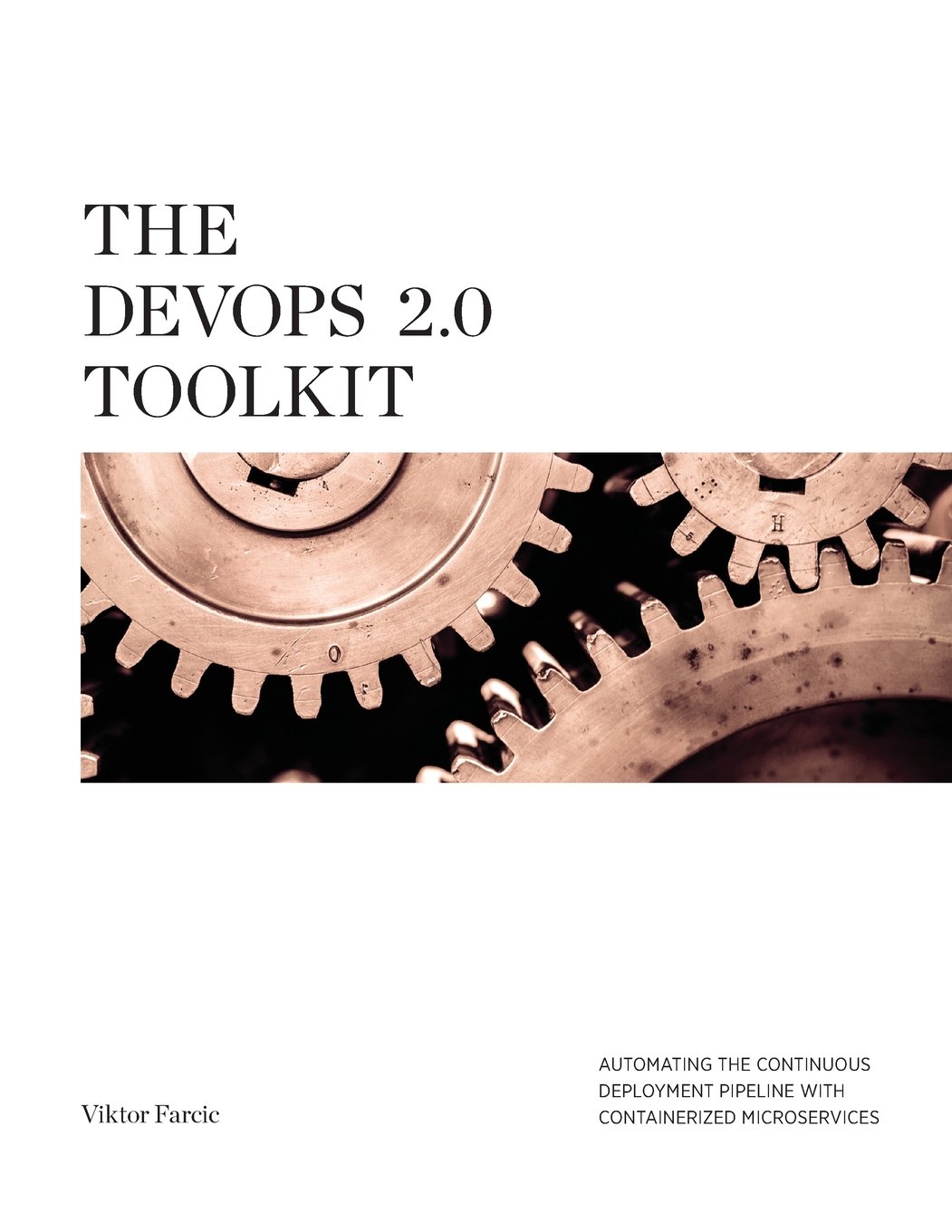 This book is about different techniques that help us architect software in a better and more efficient way with microservices packed as immutable containers, tested and deployed continuously to servers that are automatically provisioned with configuration management tools. It's about fast, reliable and continuous deployments with zero-downtime and ability to roll-back. It's about scaling to any number of servers, design of self-healing systems capable of recuperation from both hardware and software failures and about centralized logging and monitoring of the cluster.In other words, this book envelops the whole microservices development and deployment lifecycle using some of the latest and greatest practices and tools. We'll use Docker, Kubernetes, Ansible, Ubuntu, Docker Swarm and Docker Compose, Consul, etcd, Registrator, confd, and so on. We'll go through many practices and even more tools. Finally, while there will be a lot of theory, this is a hands-on book. You won't be able to complete it by reading it in a metro on a way to work. You'll have to read this book while in front of the computer and get your hands dirty.
This book is about different techniques that help us architect software in a better and more efficient way with microservices packed as immutable containers, tested and deployed continuously to servers that are automatically provisioned with configuration management tools. It's about fast, reliable and continuous deployments with zero-downtime and ability to roll-back. It's about scaling to any number of servers, design of self-healing systems capable of recuperation from both hardware and software failures and about centralized logging and monitoring of the cluster.In other words, this book envelops the whole microservices development and deployment lifecycle using some of the latest and greatest practices and tools. We'll use Docker, Kubernetes, Ansible, Ubuntu, Docker Swarm and Docker Compose, Consul, etcd, Registrator, confd, and so on. We'll go through many practices and even more tools. Finally, while there will be a lot of theory, this is a hands-on book. You won't be able to complete it by reading it in a metro on a way to work. You'll have to read this book while in front of the computer and get your hands dirty.Viktor Farcic
2016
1st
English
414 pages
Building Microservices: Designing Fine-Grained Systems
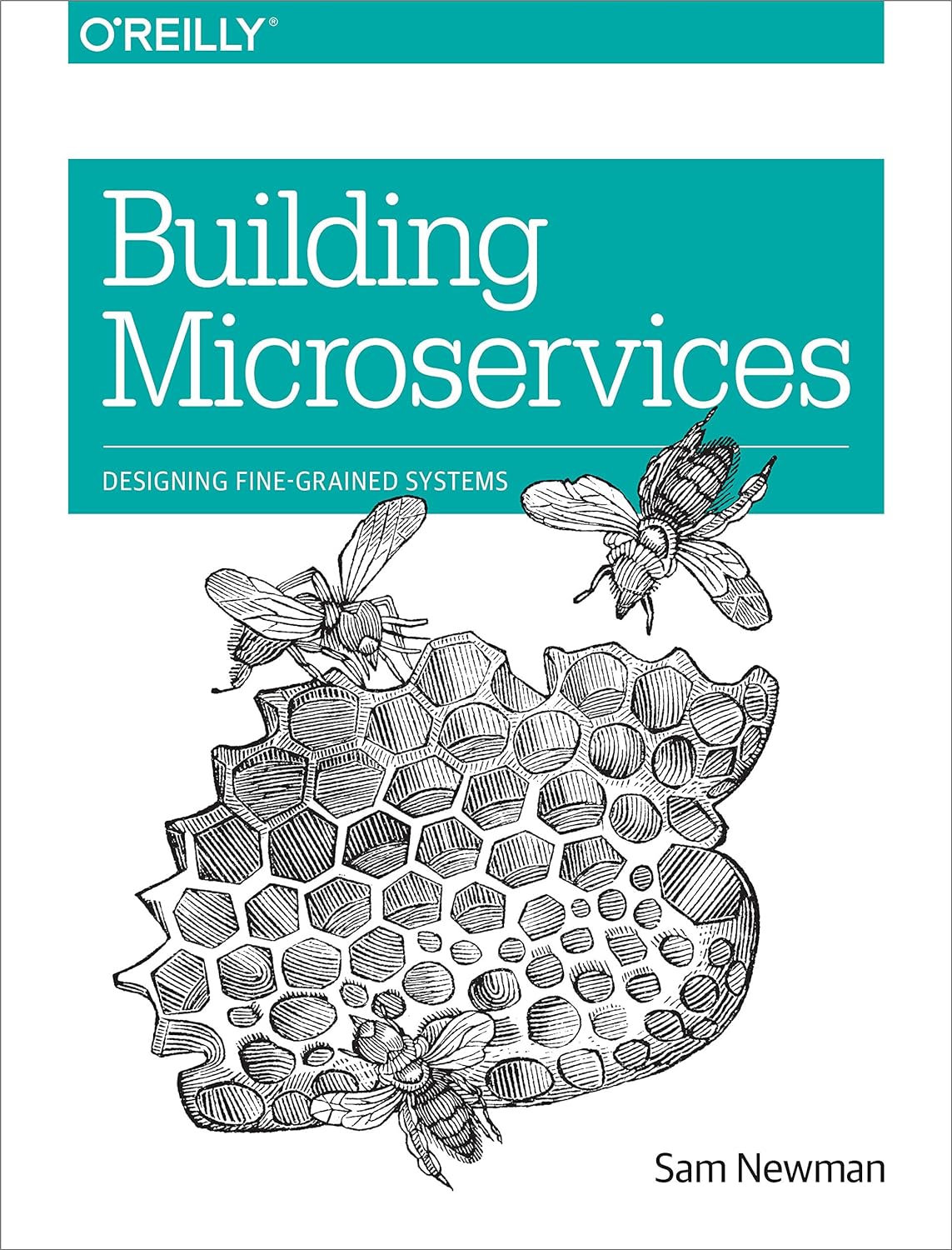 Distributed systems have become more fine-grained in the past 10 years, shifting from code-heavy monolithic applications to smaller, self-contained microservices. But developing these systems brings its own set of headaches. With lots of examples and practical advice, this book takes a holistic view of the topics that system architects and administrators must consider when building, managing, and evolving microservice architectures. Microservice technologies are moving quickly. Author Sam Newman provides you with a firm grounding in the concepts while diving into current solutions for modeling, integrating, testing, deploying, and monitoring your own autonomous services. You’ll follow a fictional company throughout the book to learn how building a microservice architecture affects a single domain.
Distributed systems have become more fine-grained in the past 10 years, shifting from code-heavy monolithic applications to smaller, self-contained microservices. But developing these systems brings its own set of headaches. With lots of examples and practical advice, this book takes a holistic view of the topics that system architects and administrators must consider when building, managing, and evolving microservice architectures. Microservice technologies are moving quickly. Author Sam Newman provides you with a firm grounding in the concepts while diving into current solutions for modeling, integrating, testing, deploying, and monitoring your own autonomous services. You’ll follow a fictional company throughout the book to learn how building a microservice architecture affects a single domain.Sam Newman
2015
1st
English
278 pages

Comments powered by Disqus.